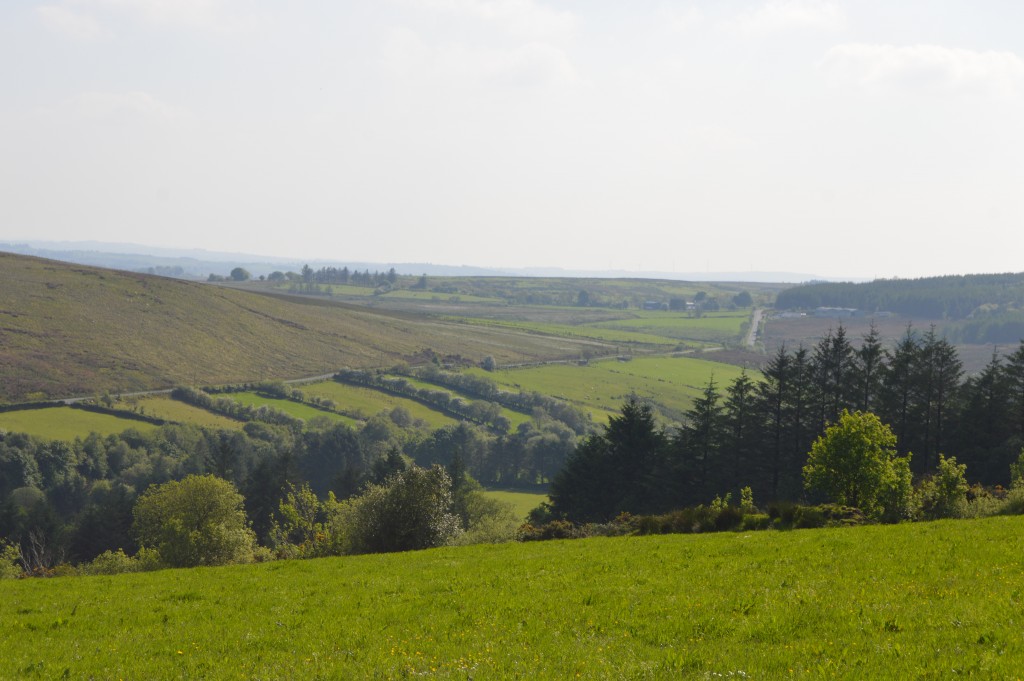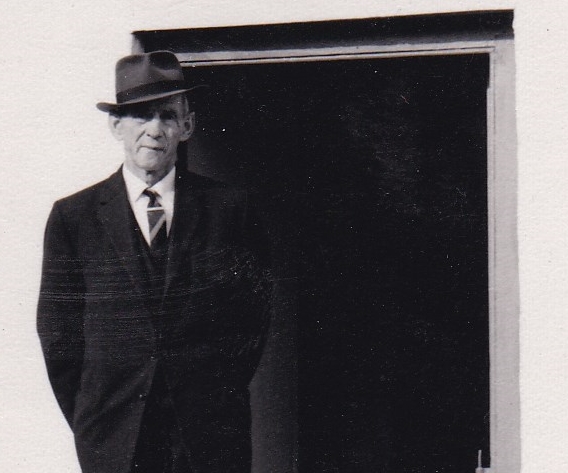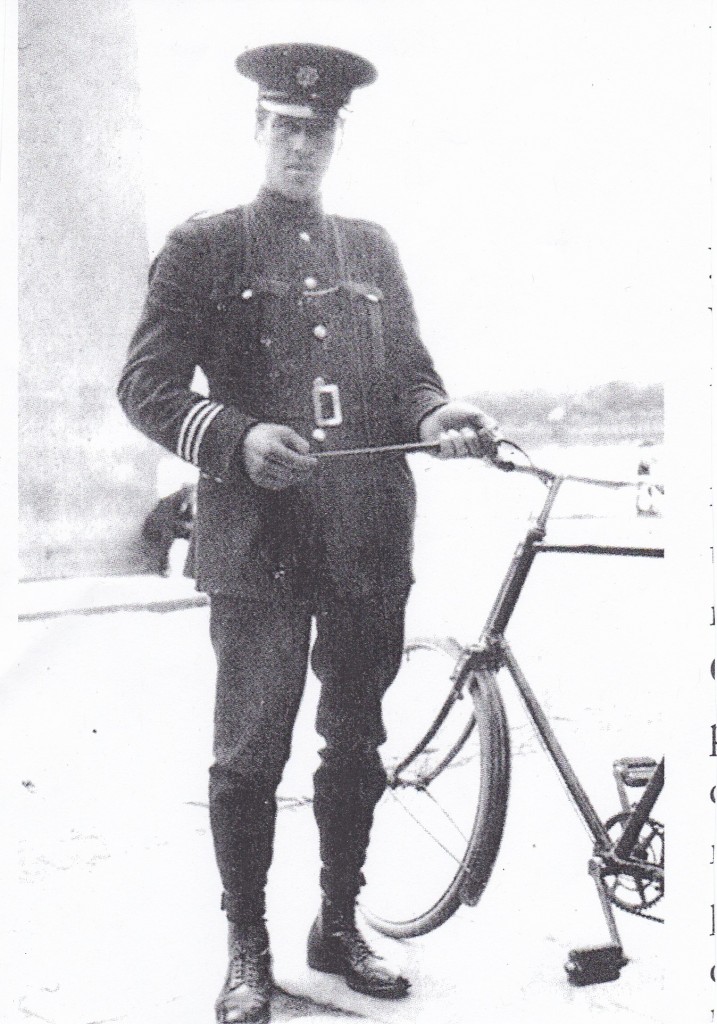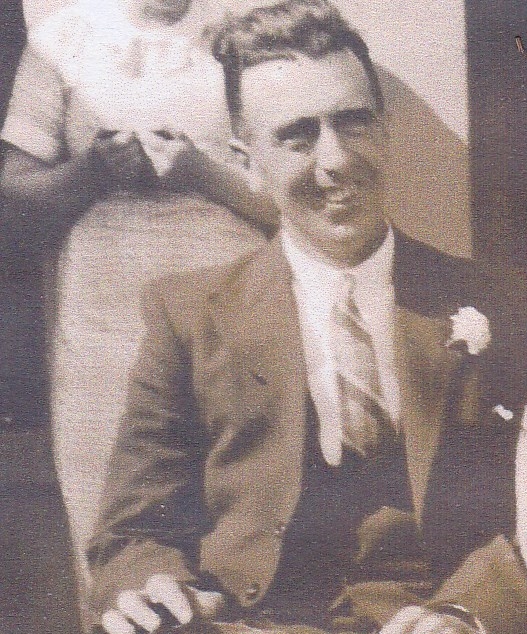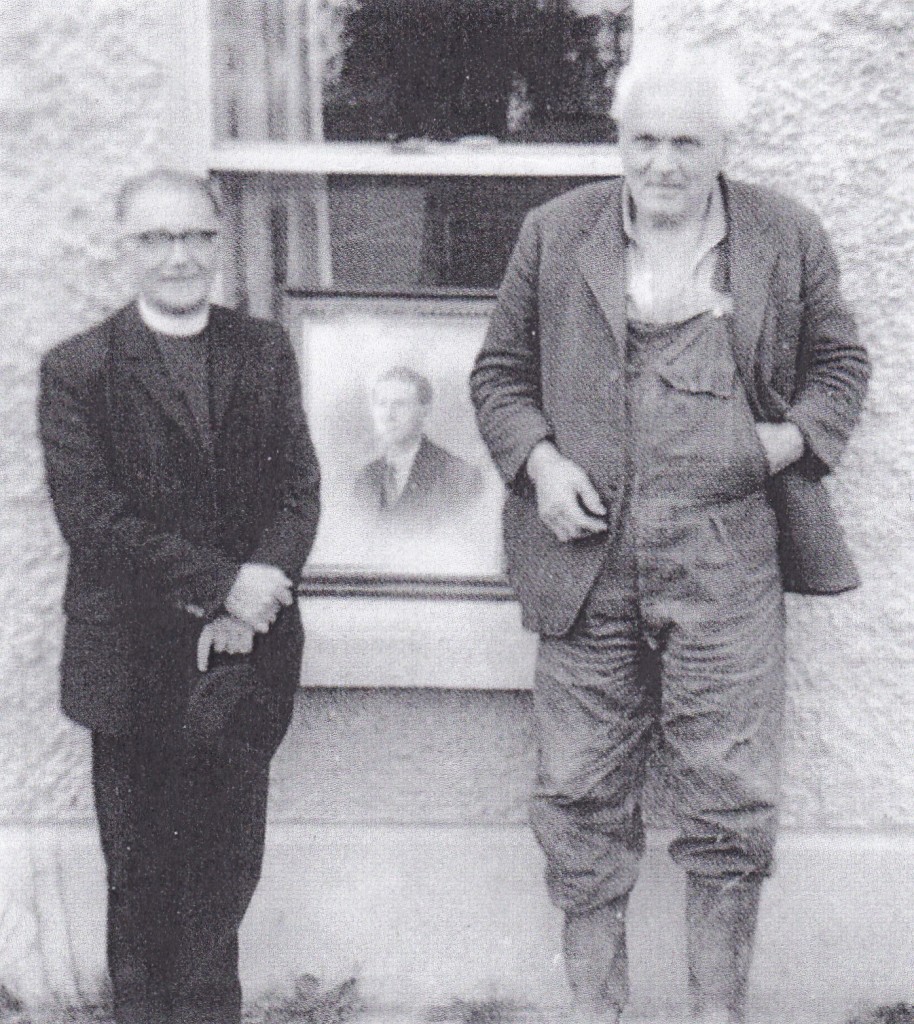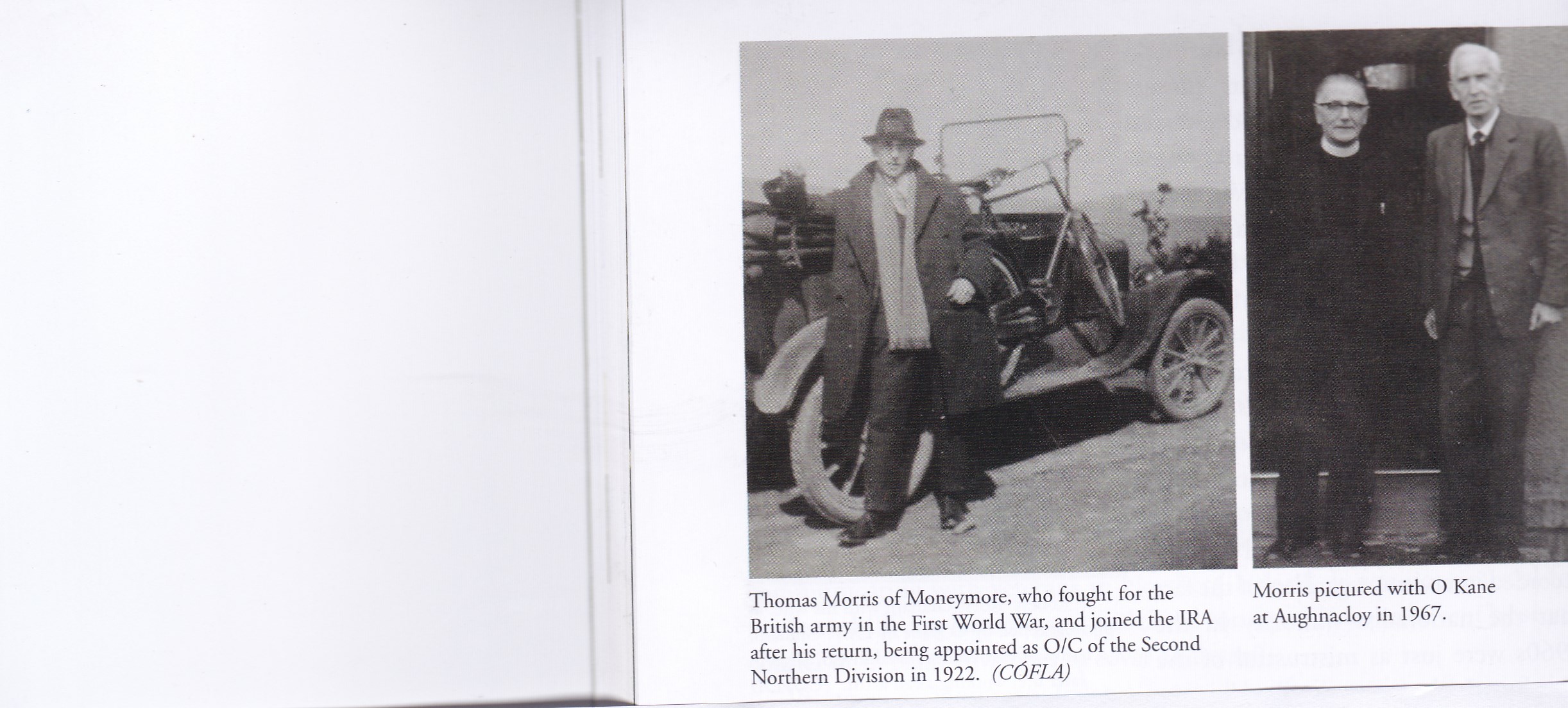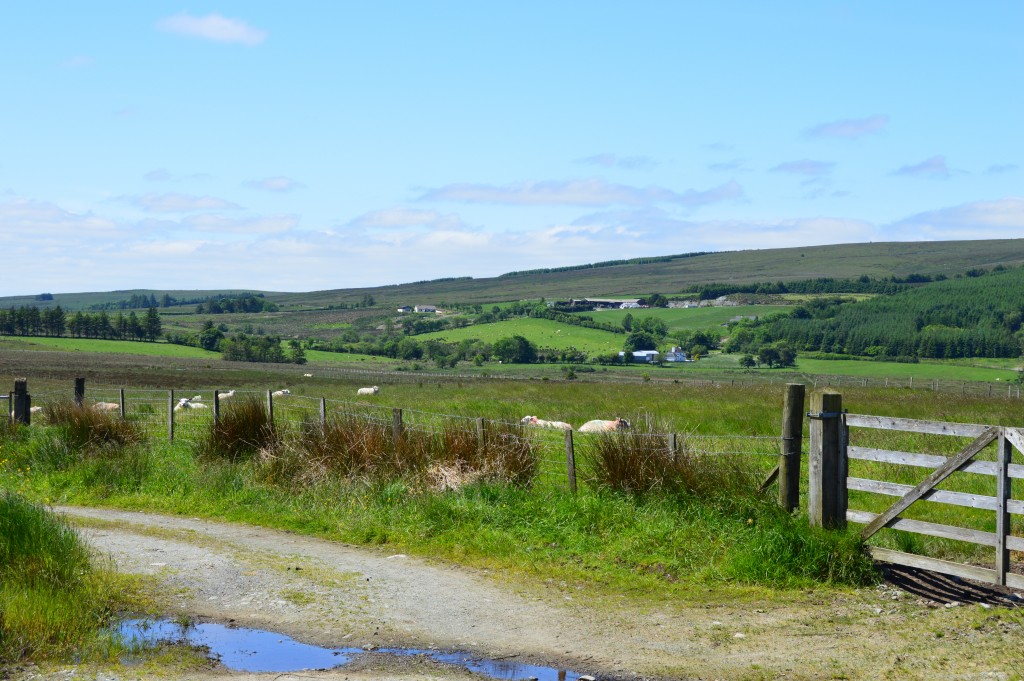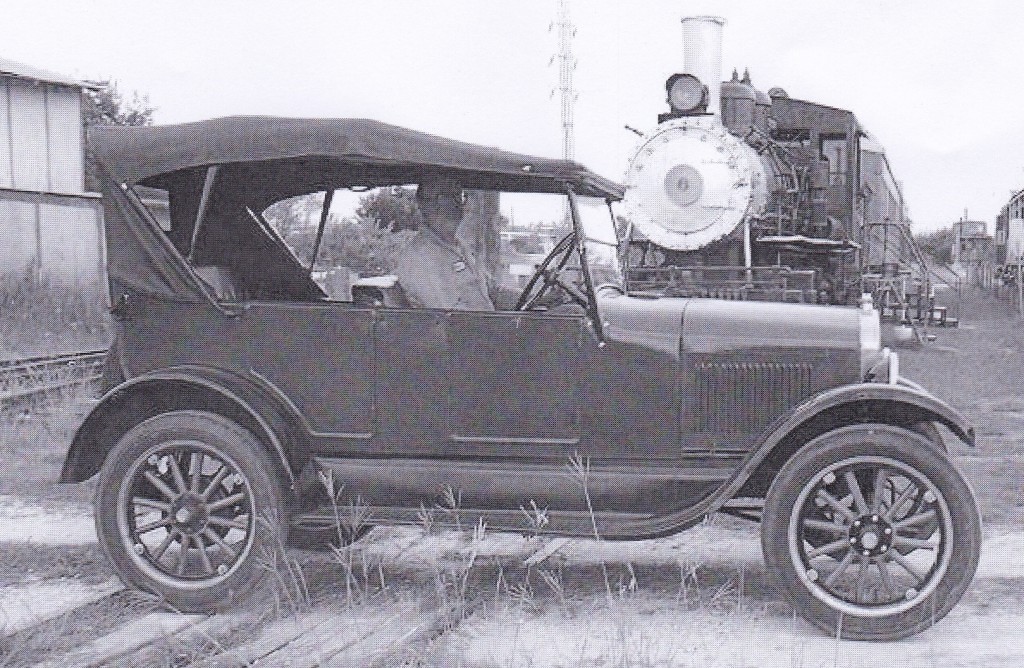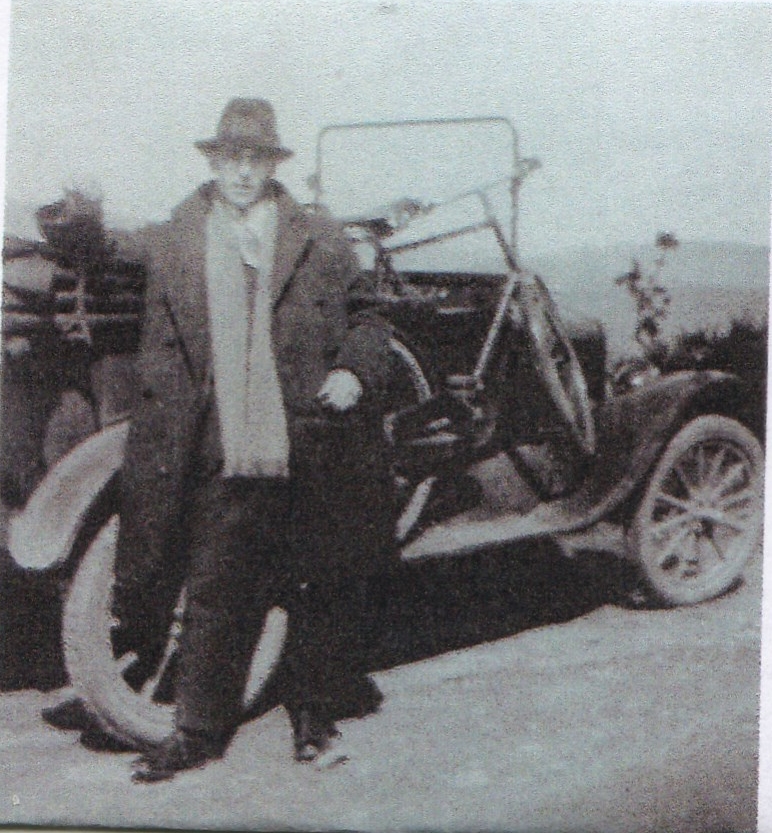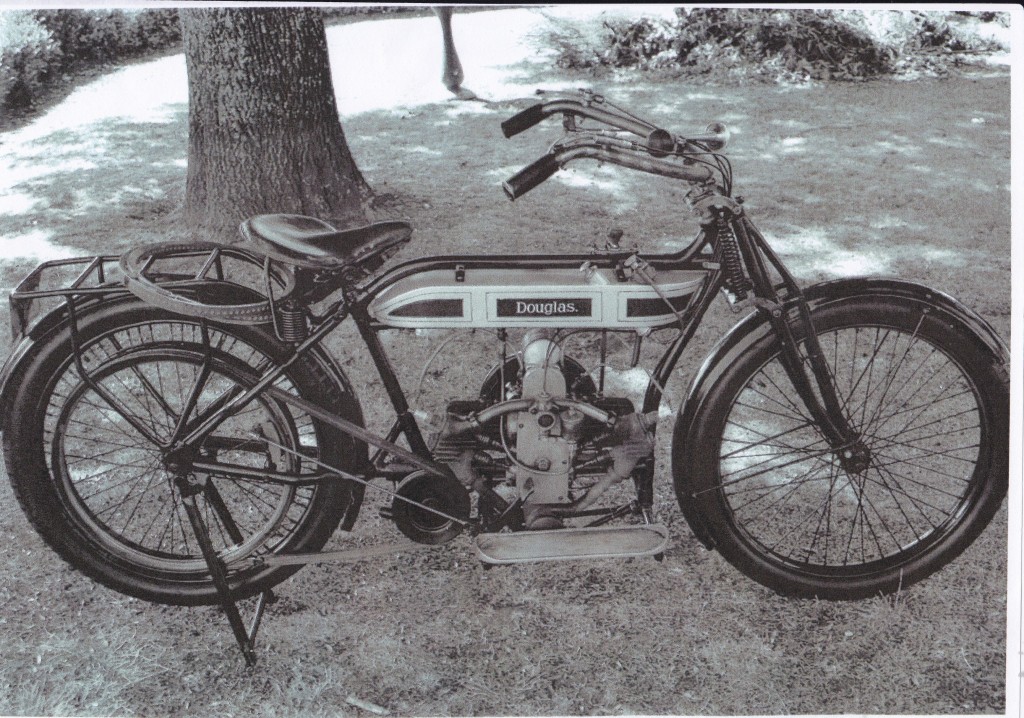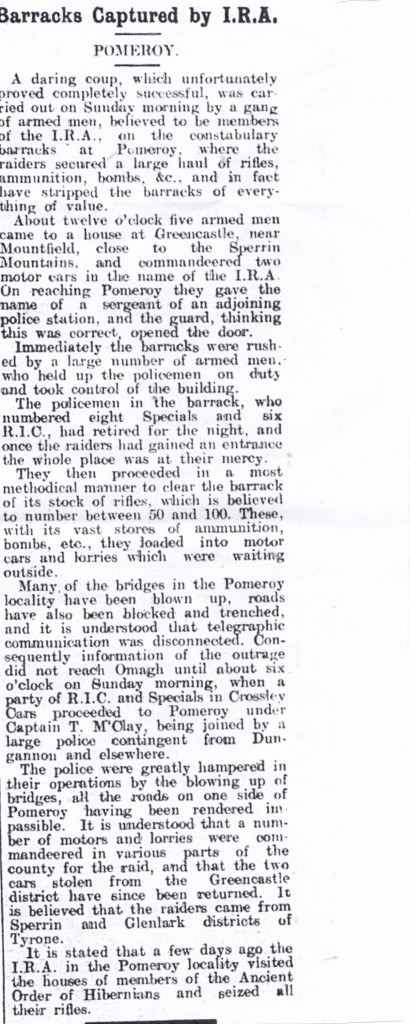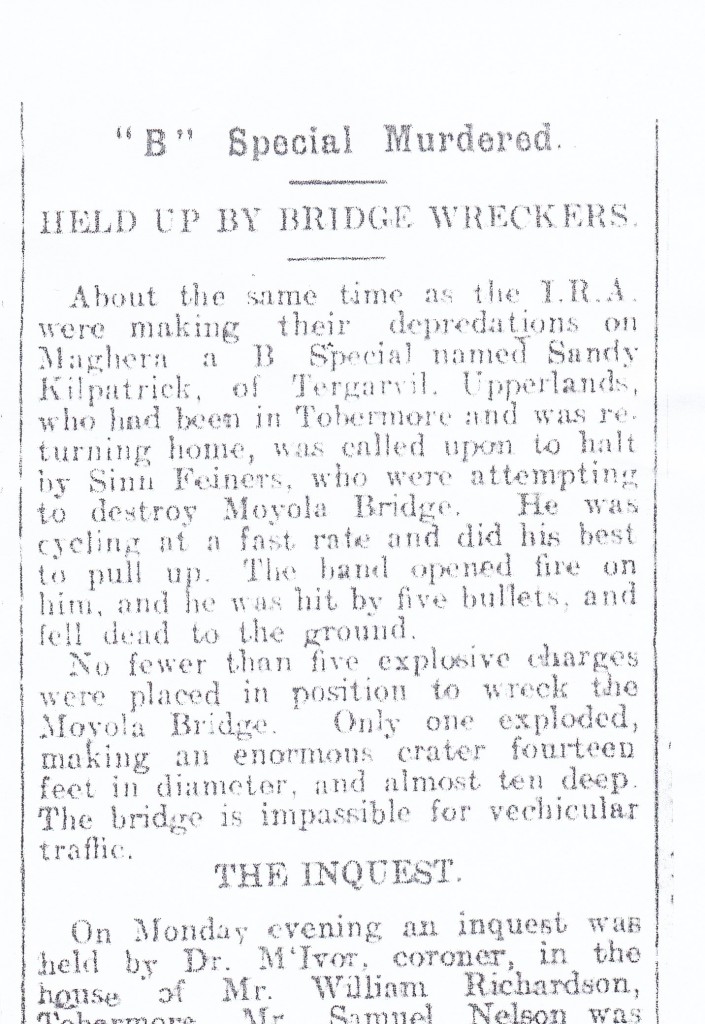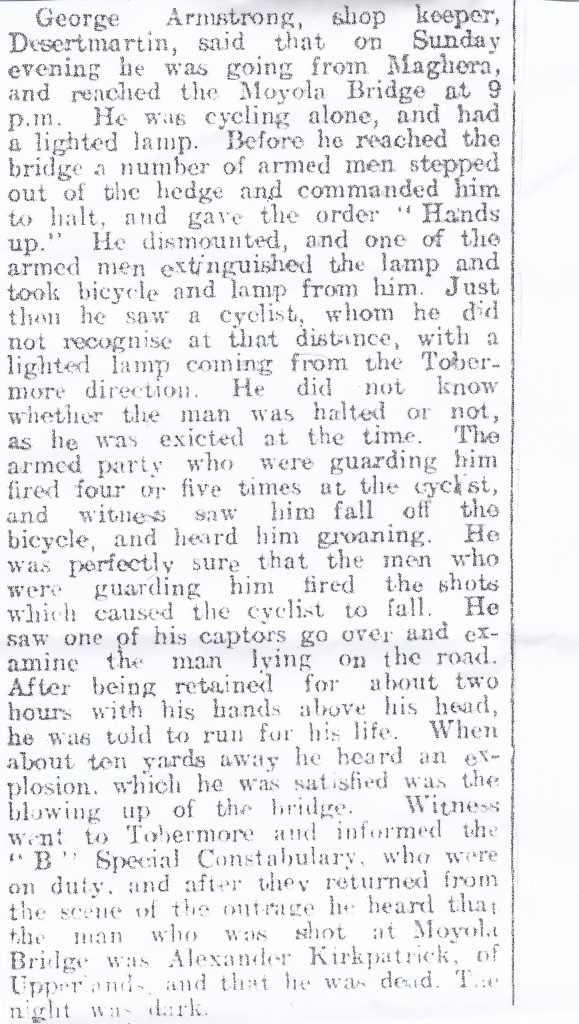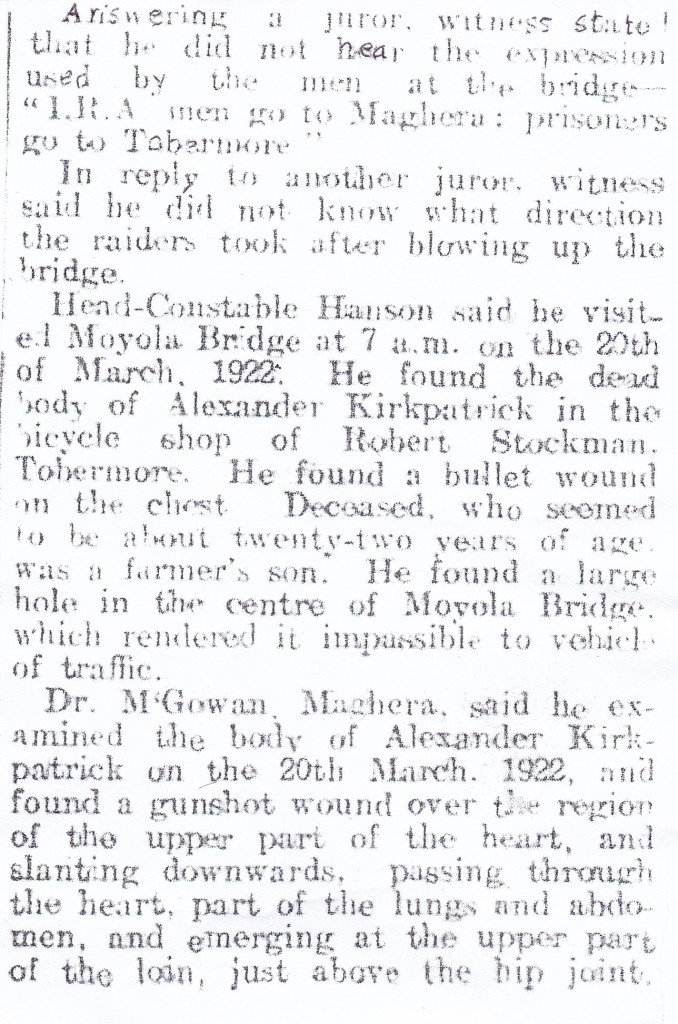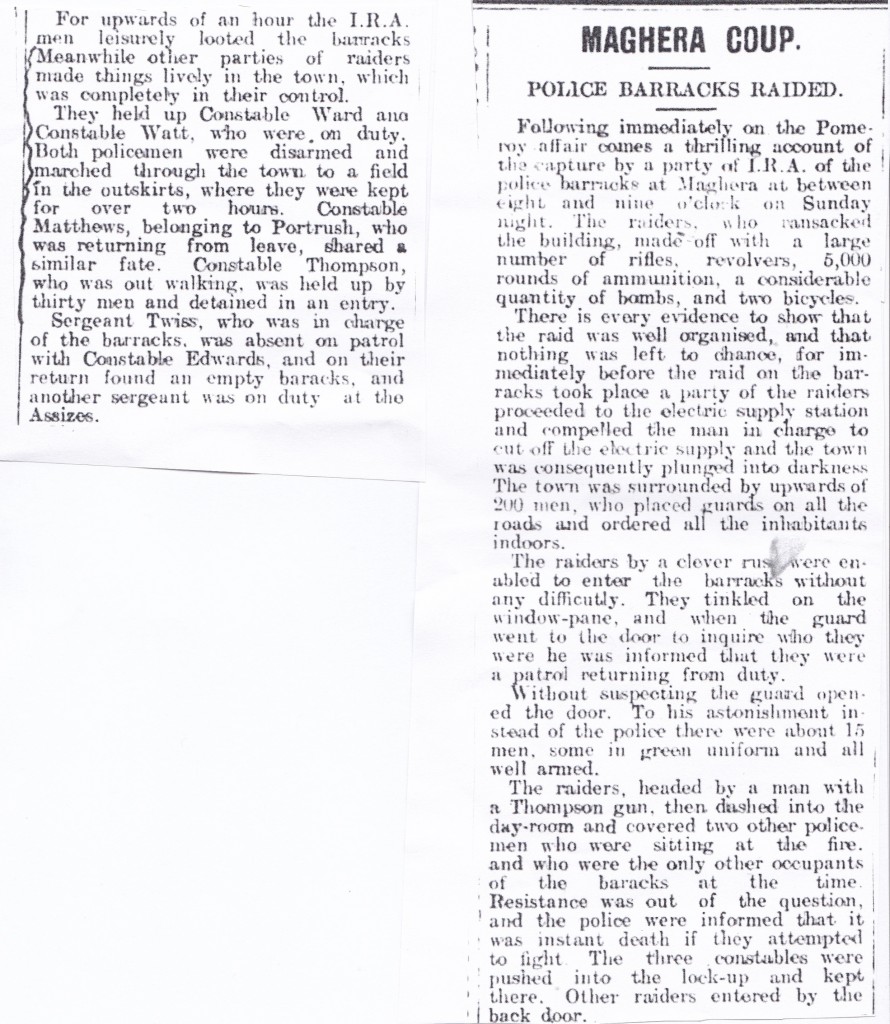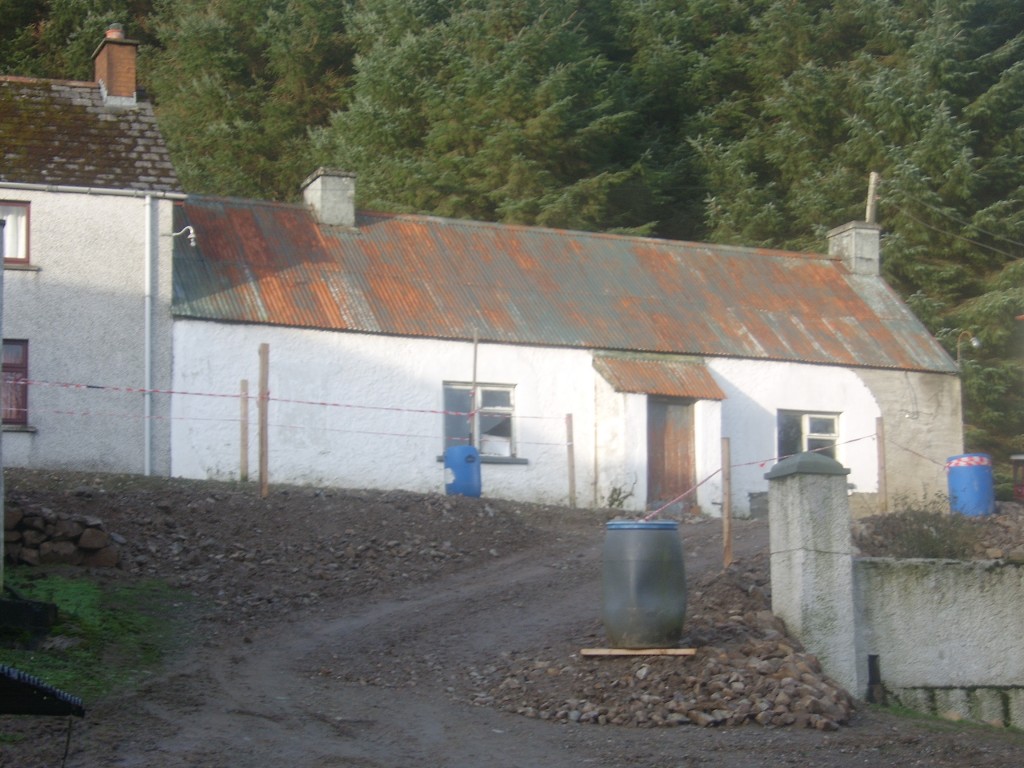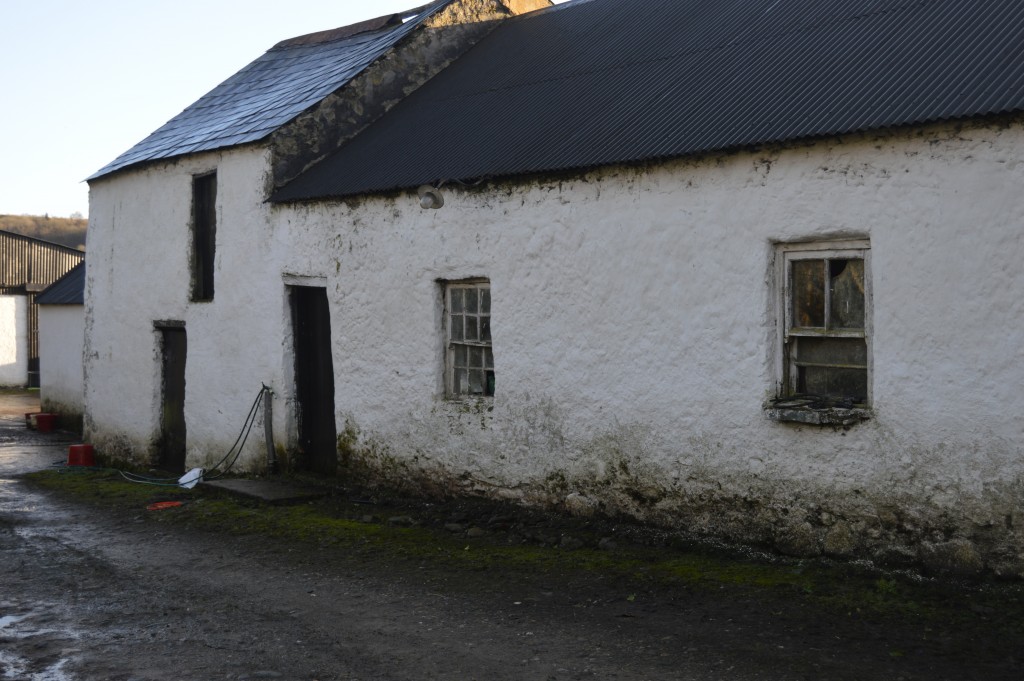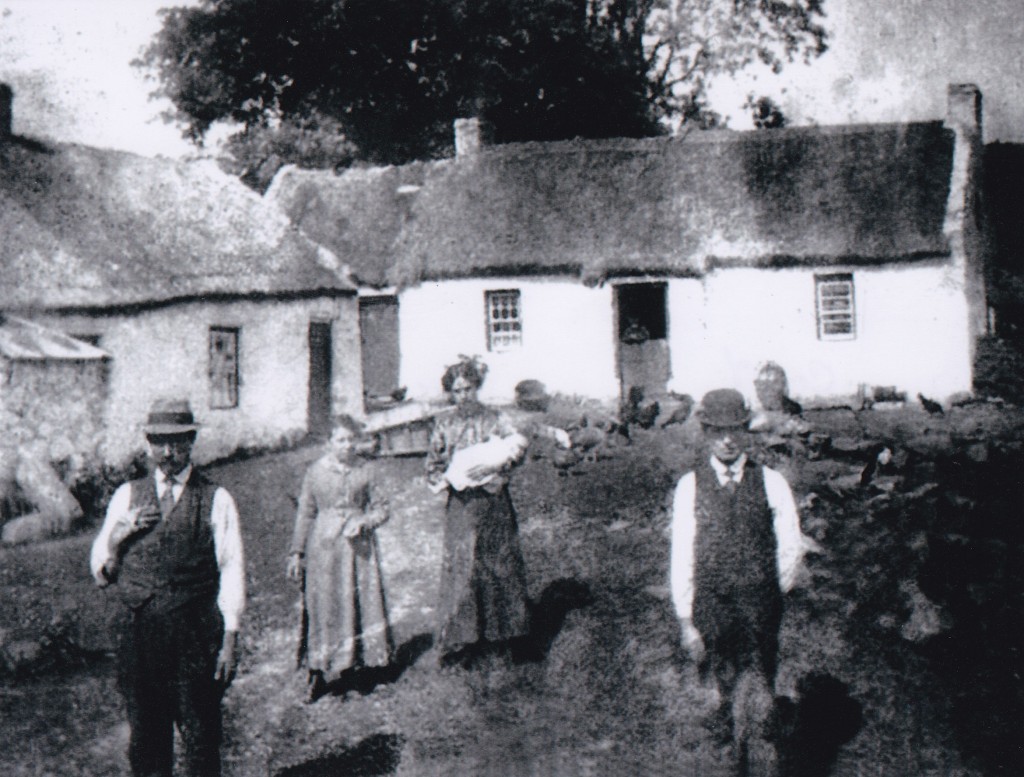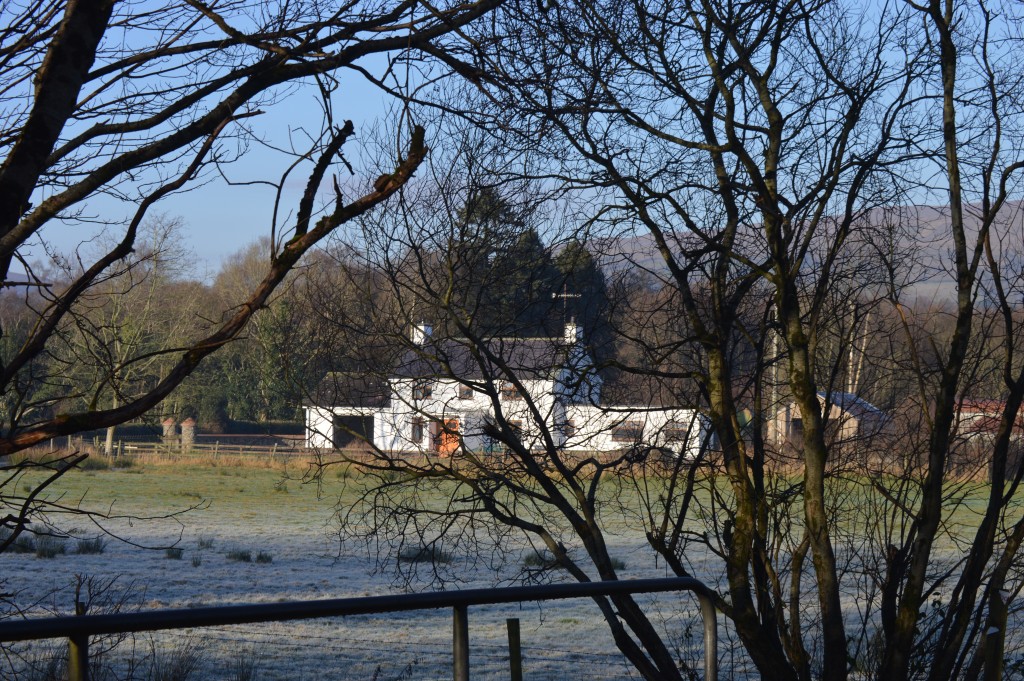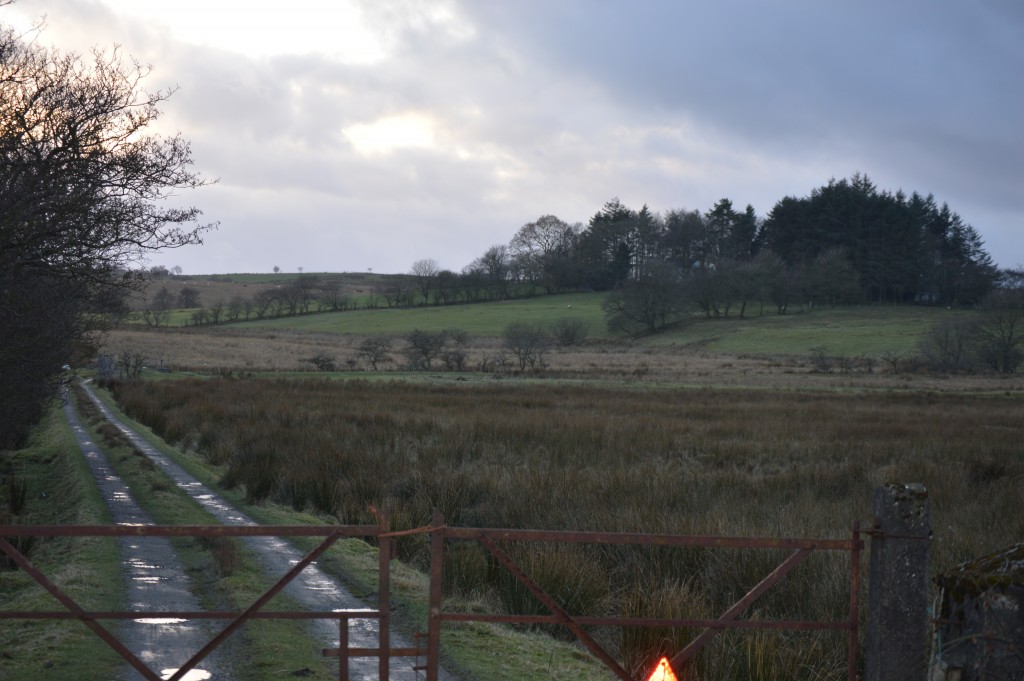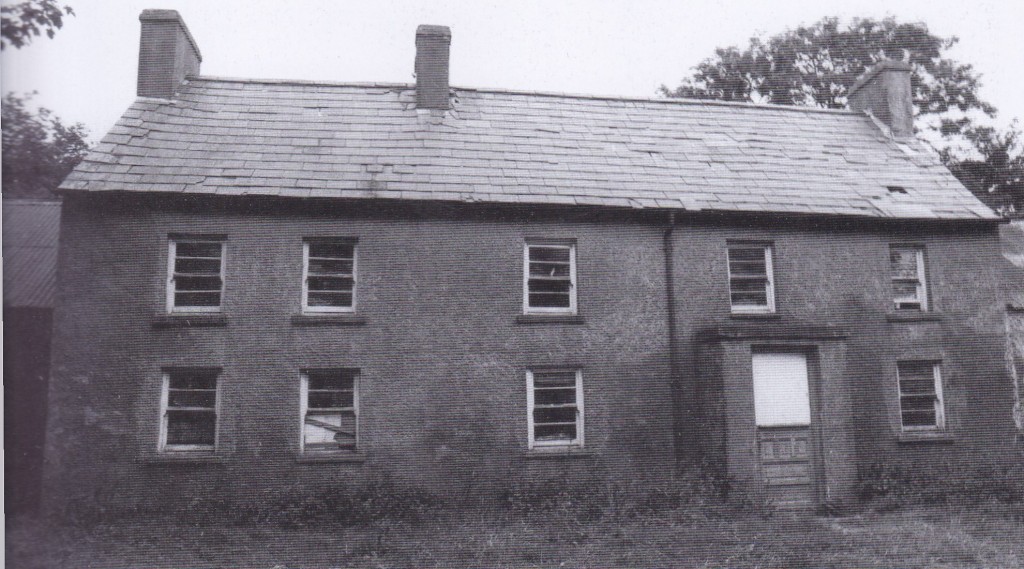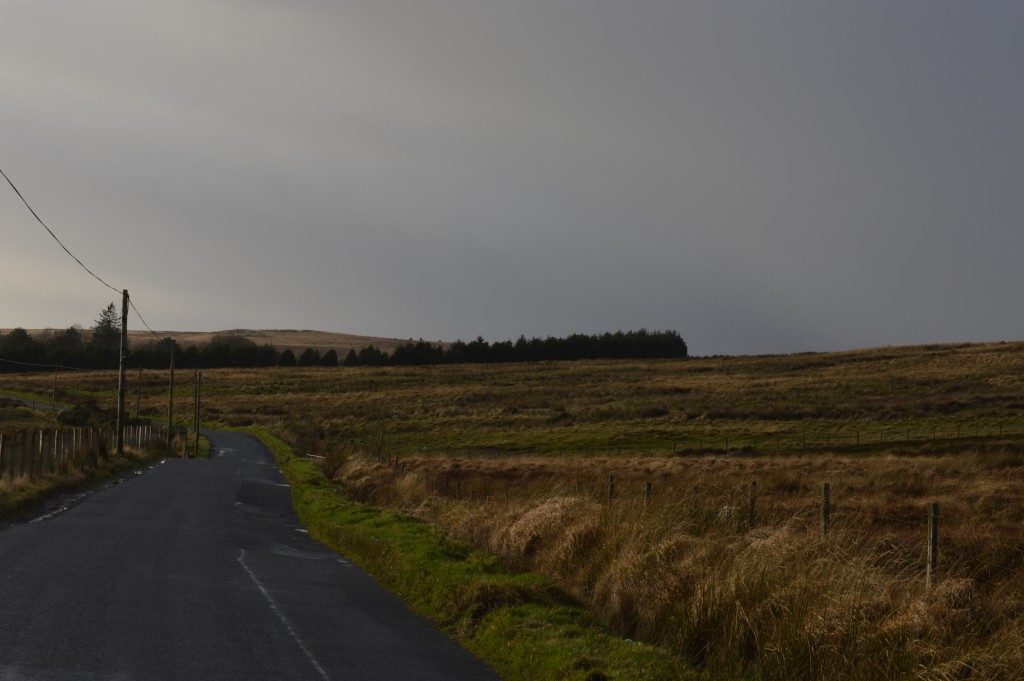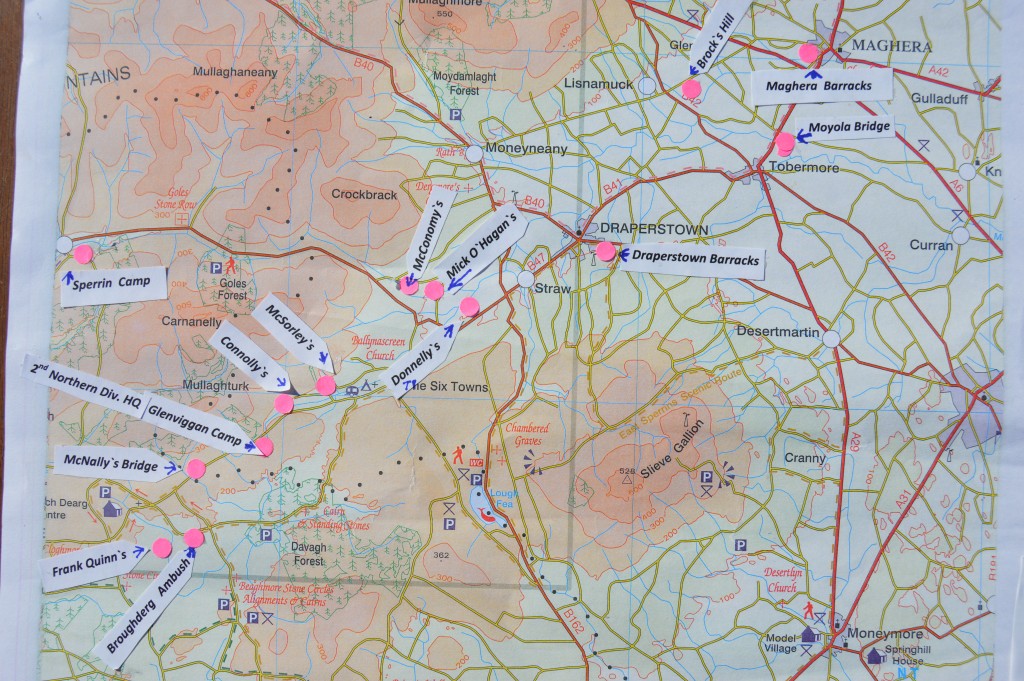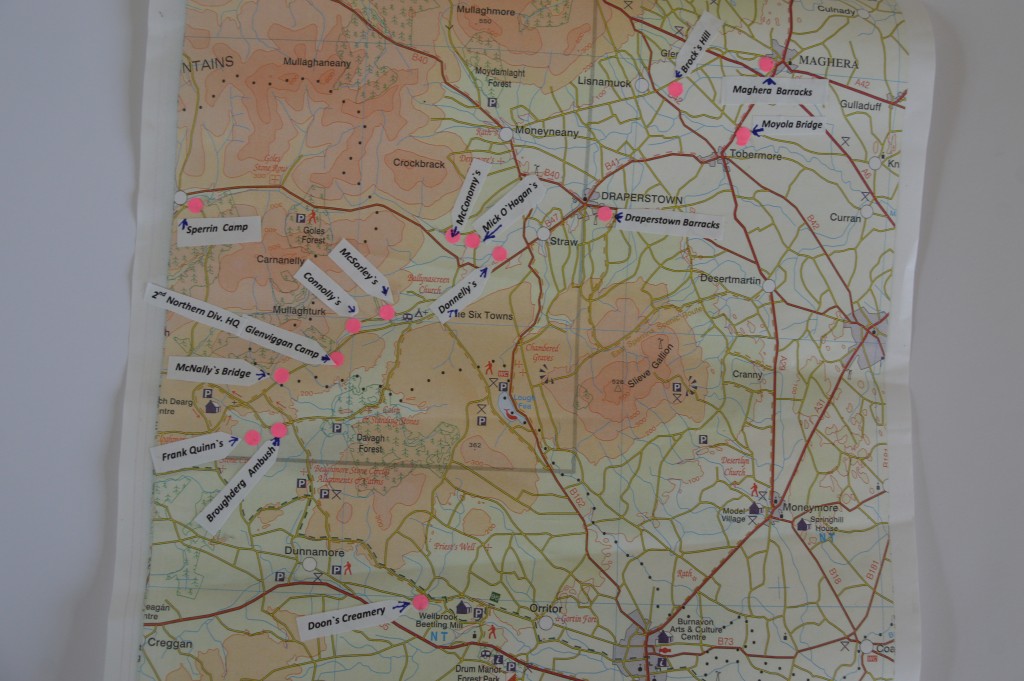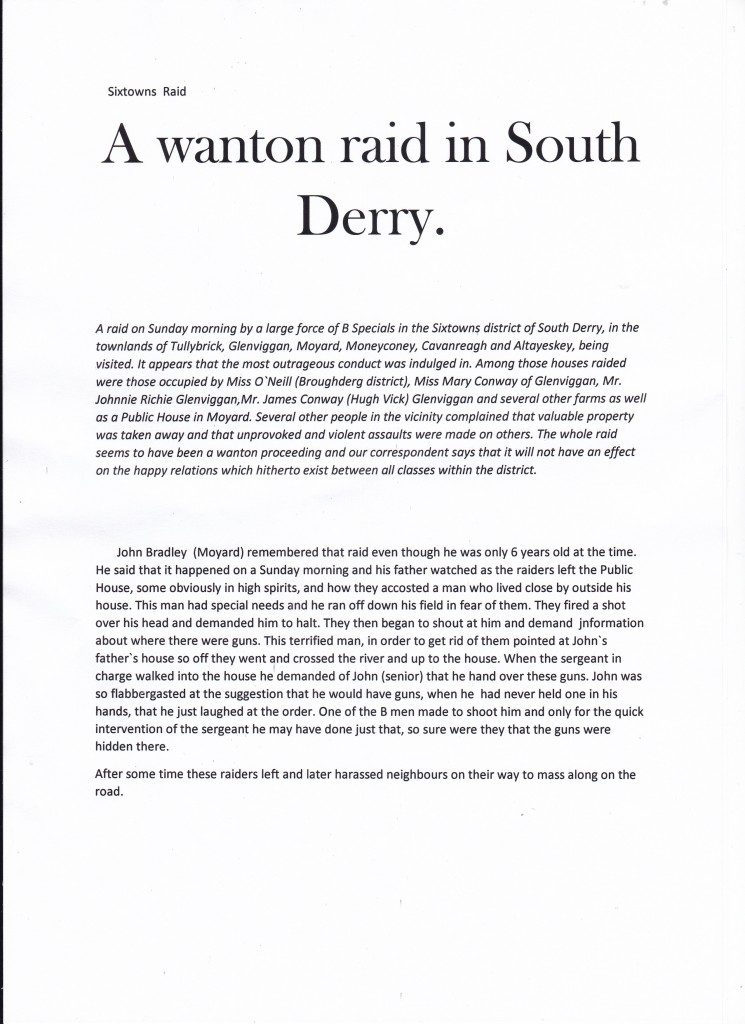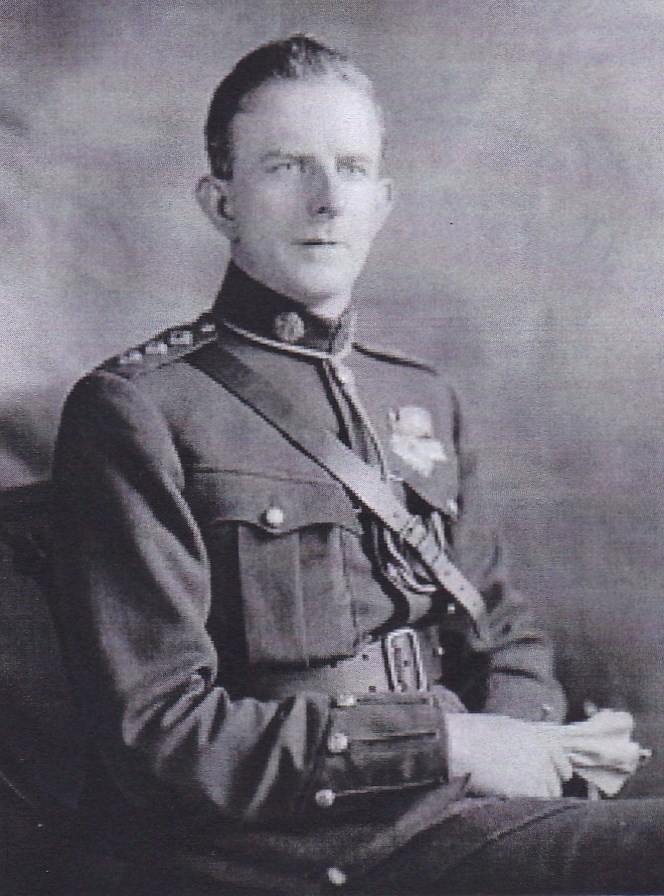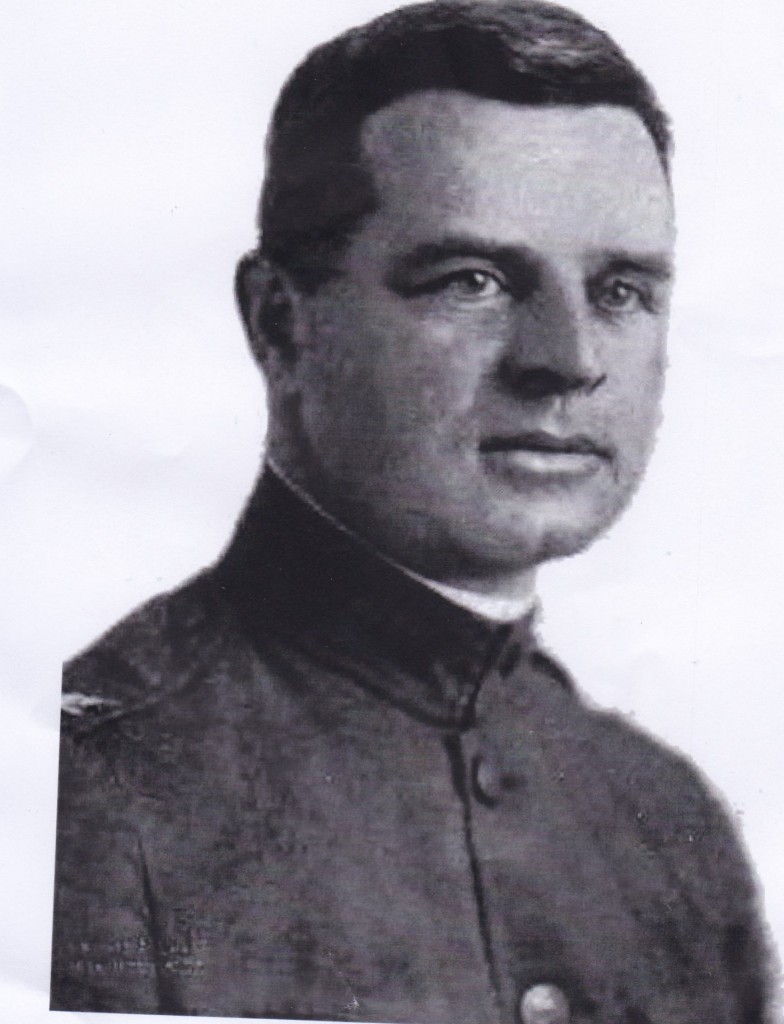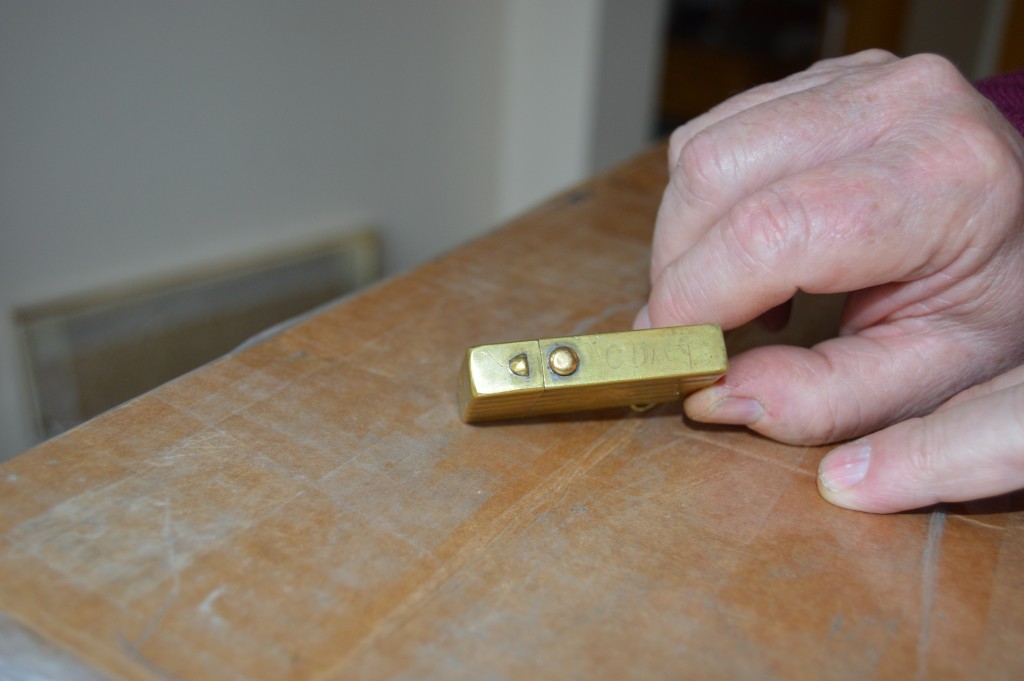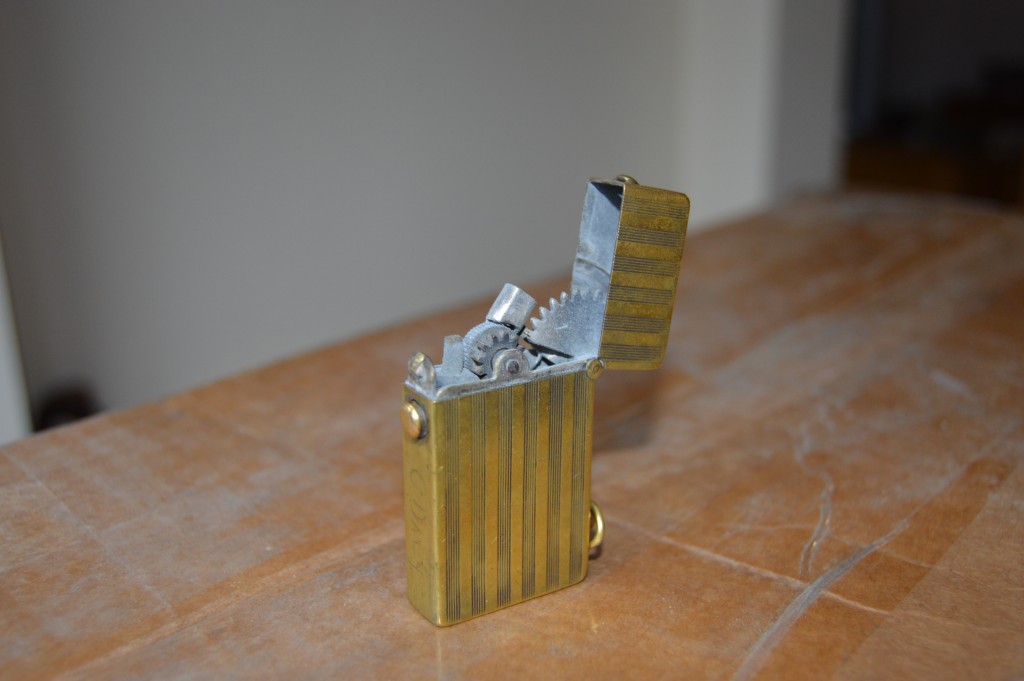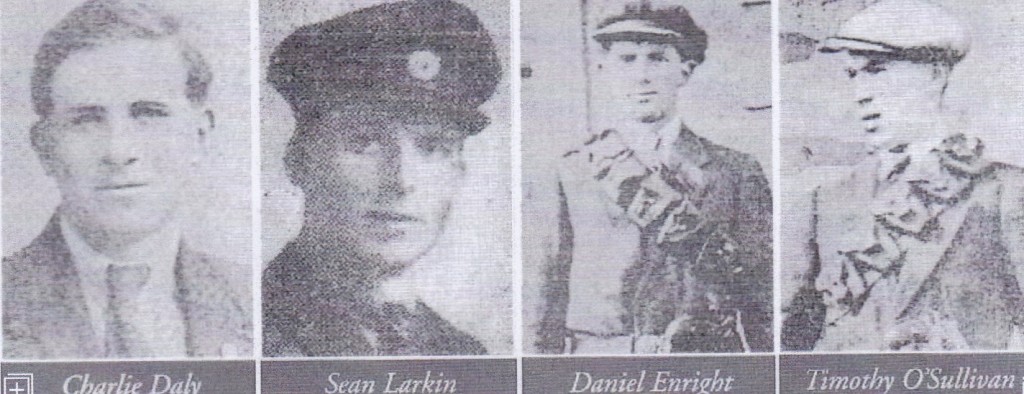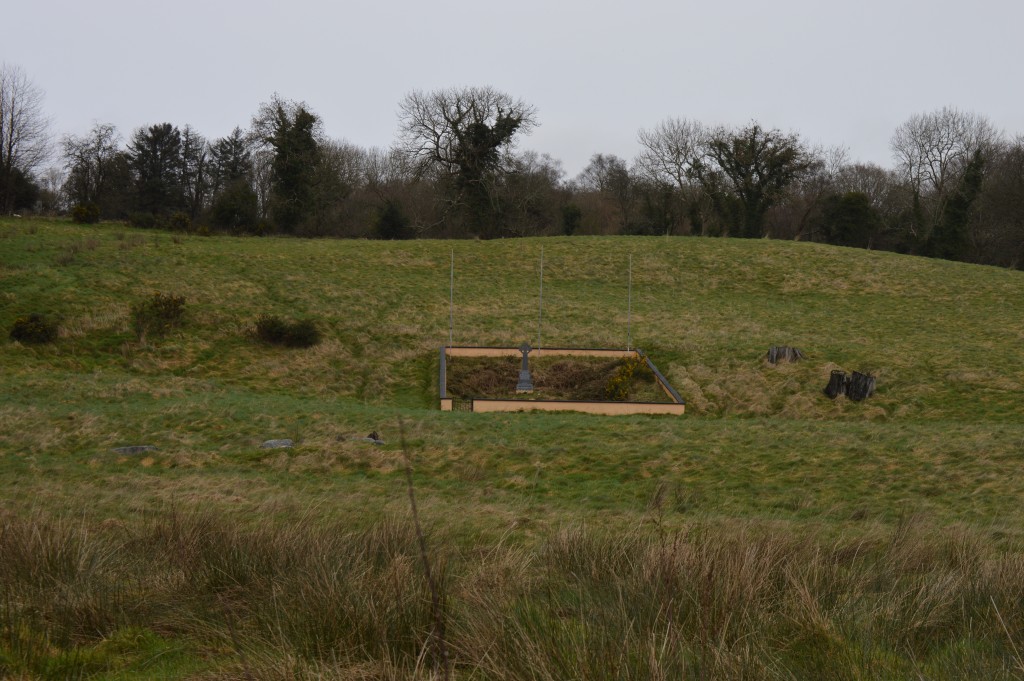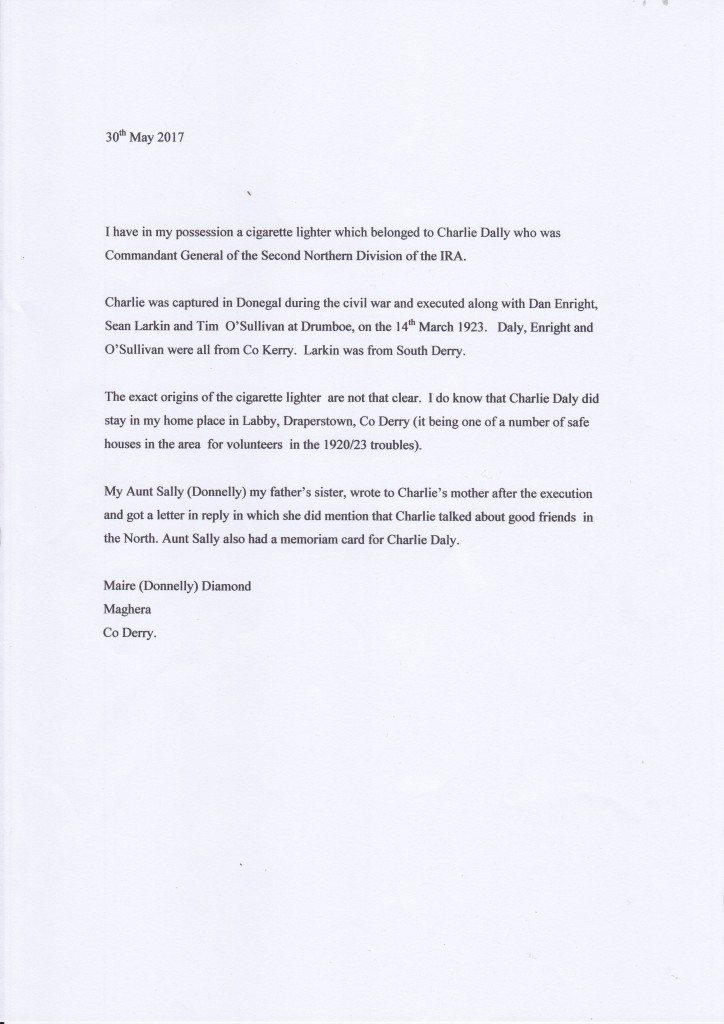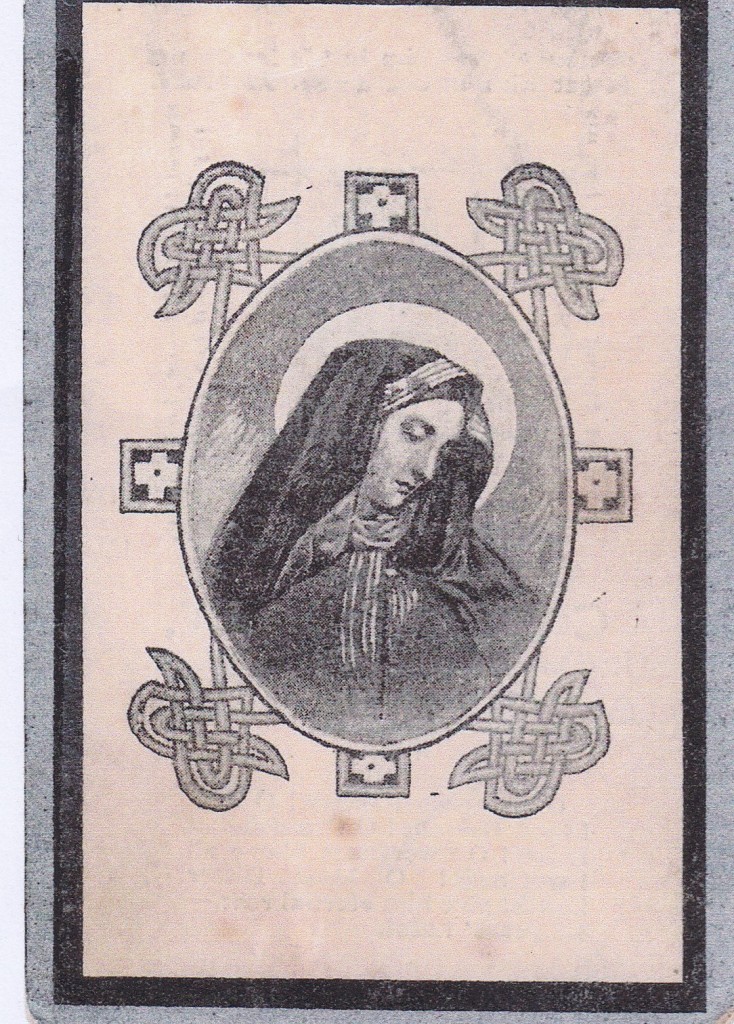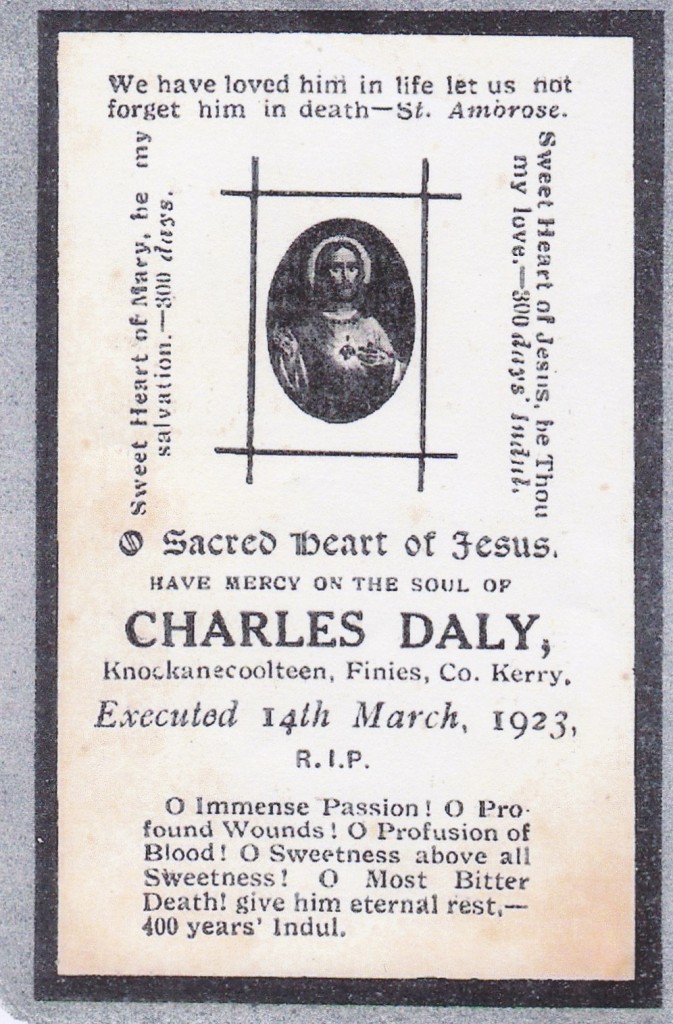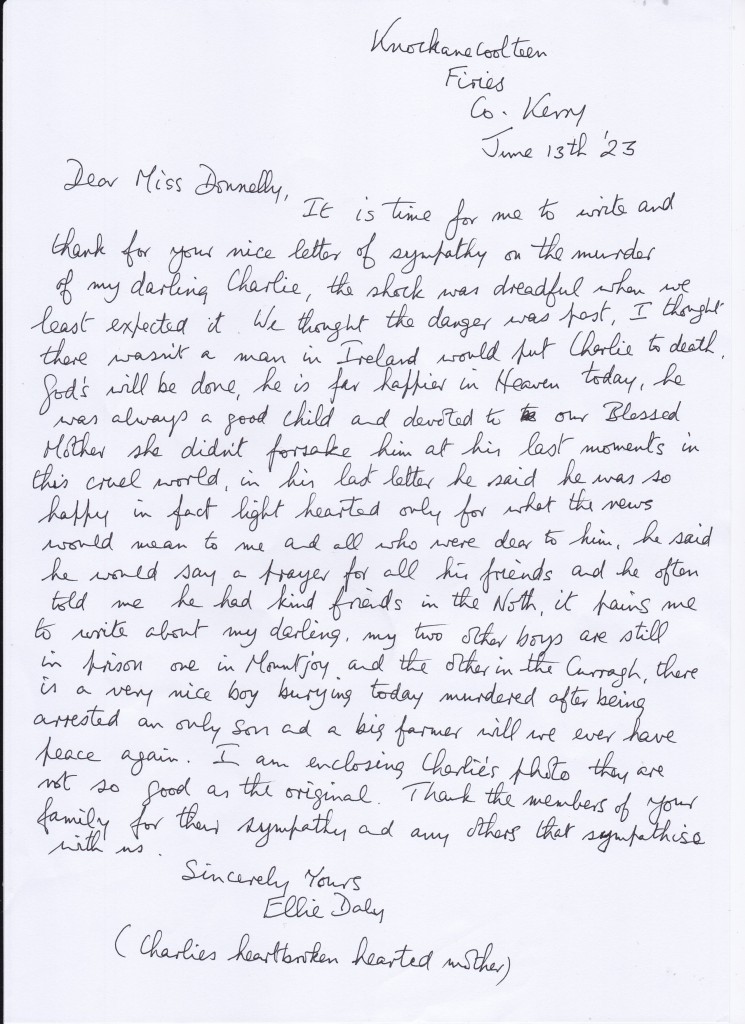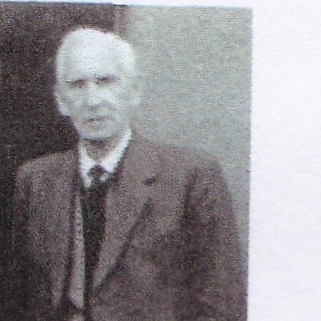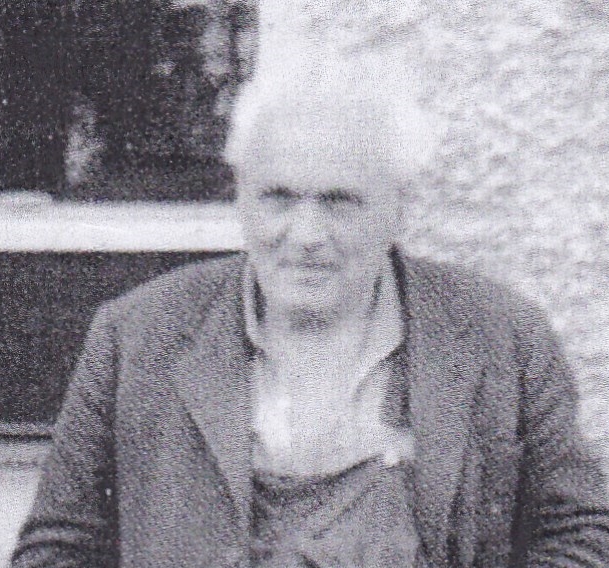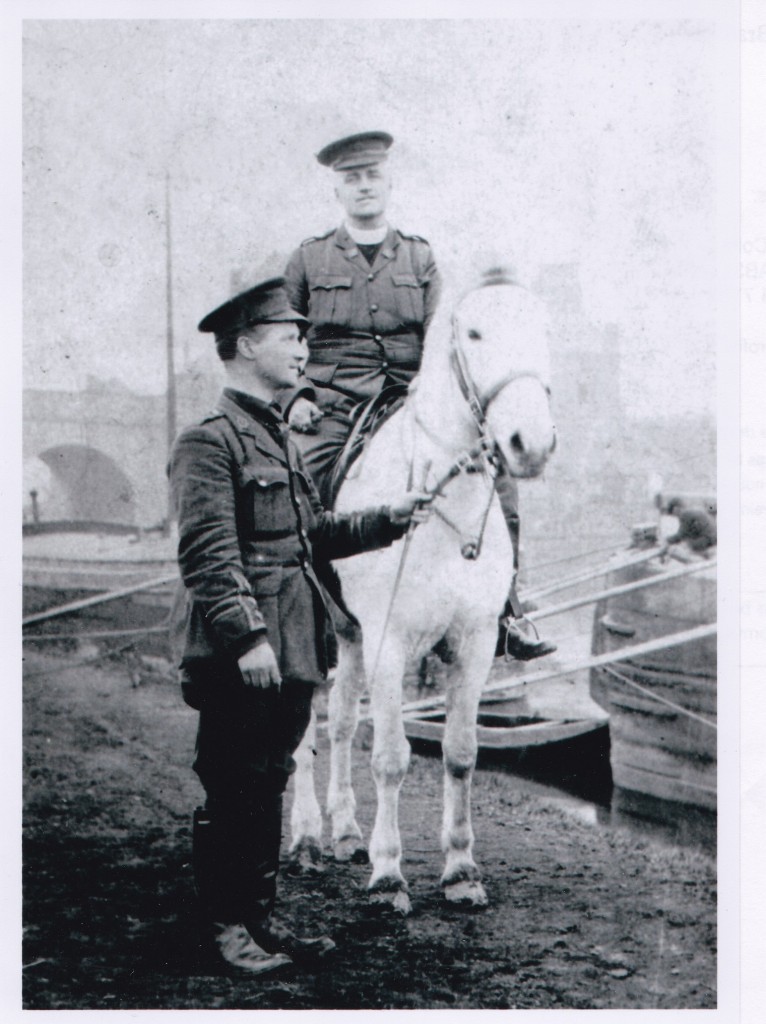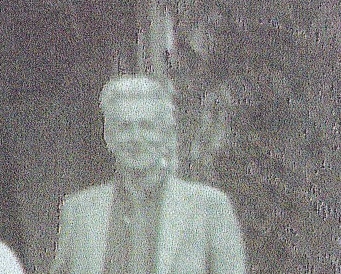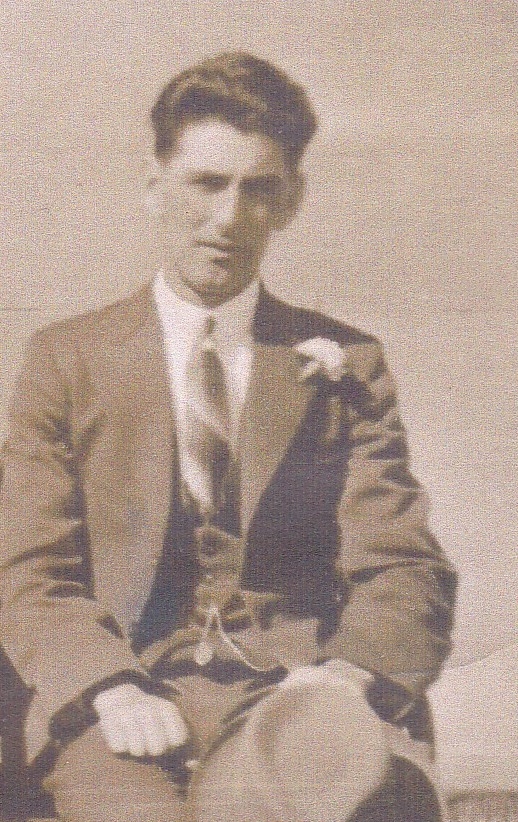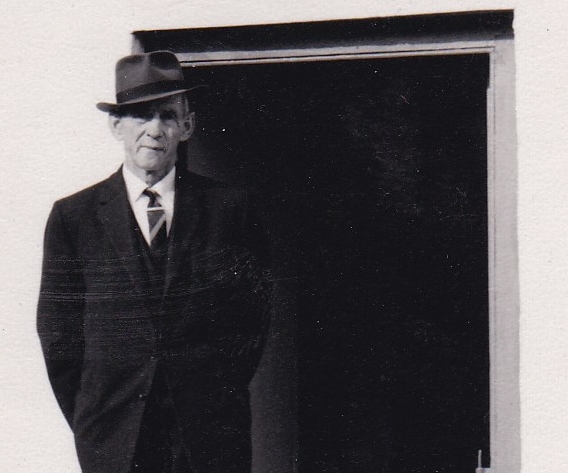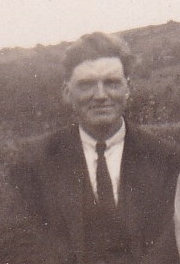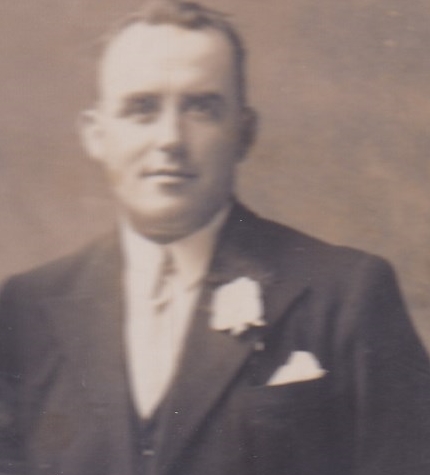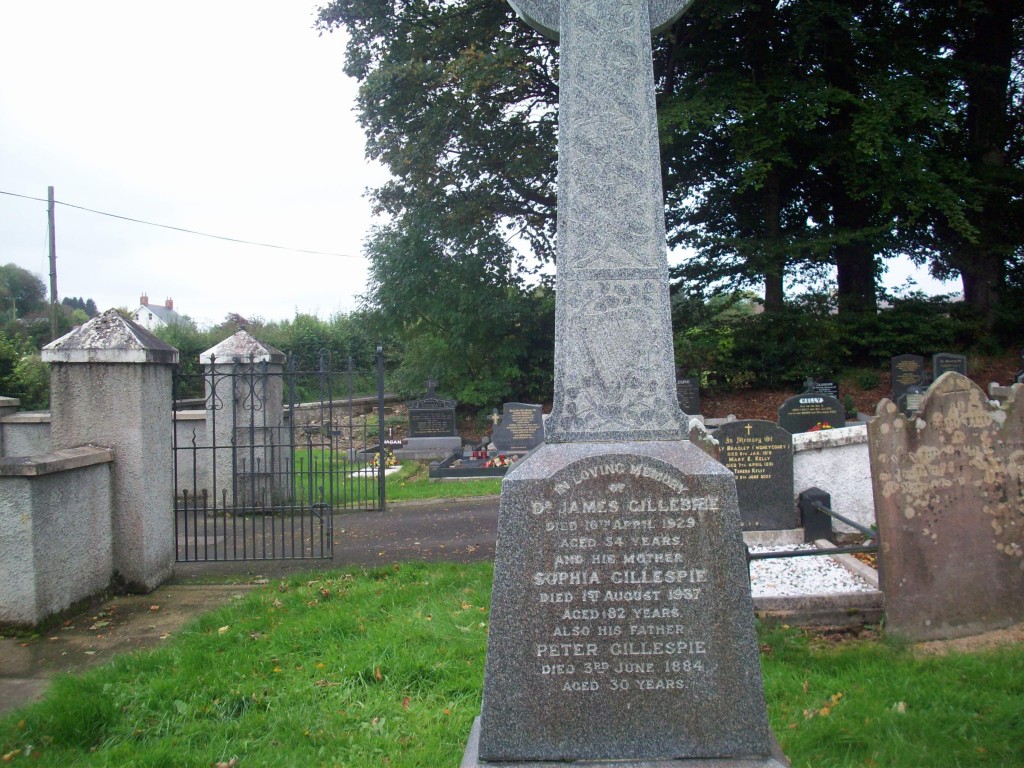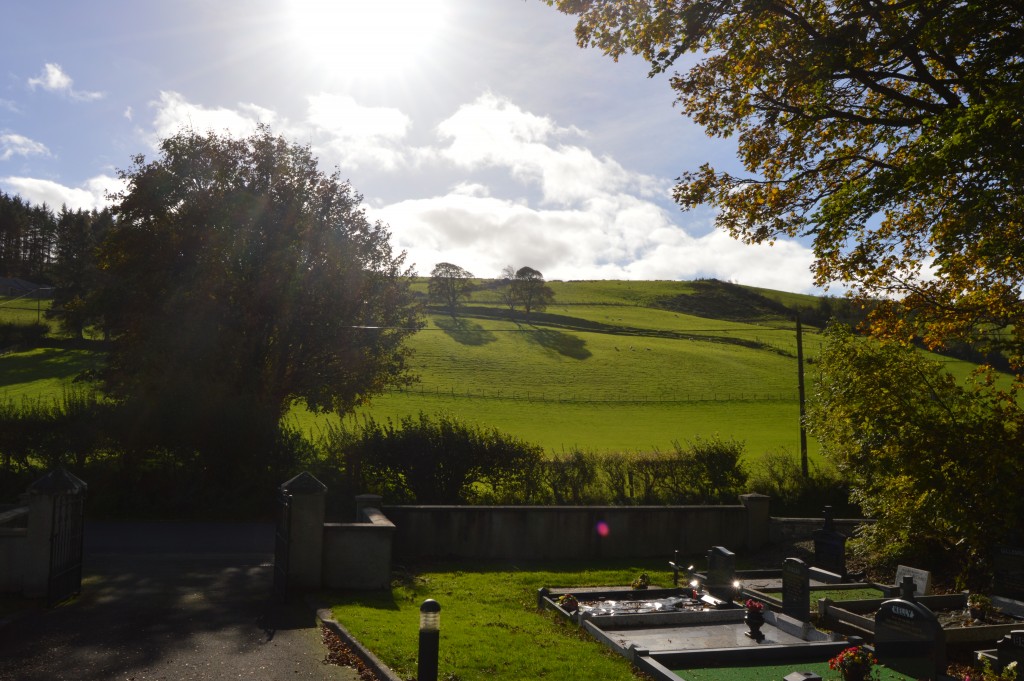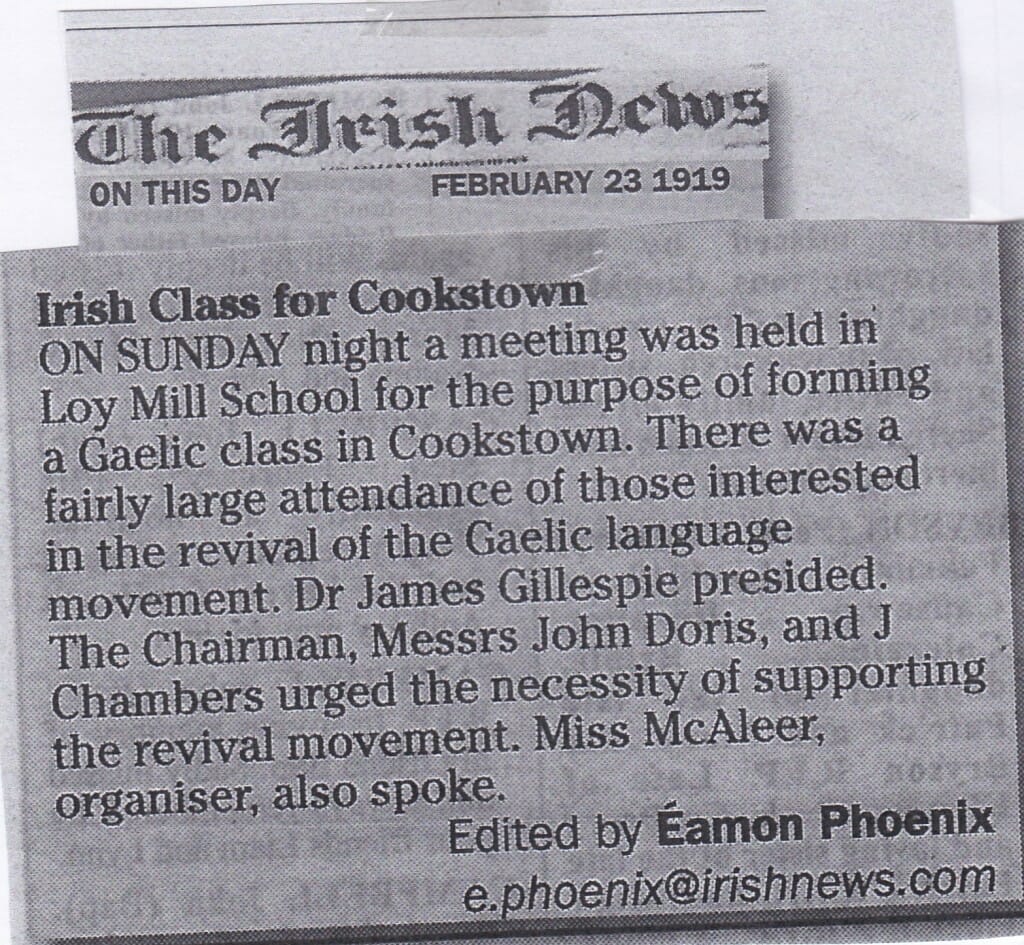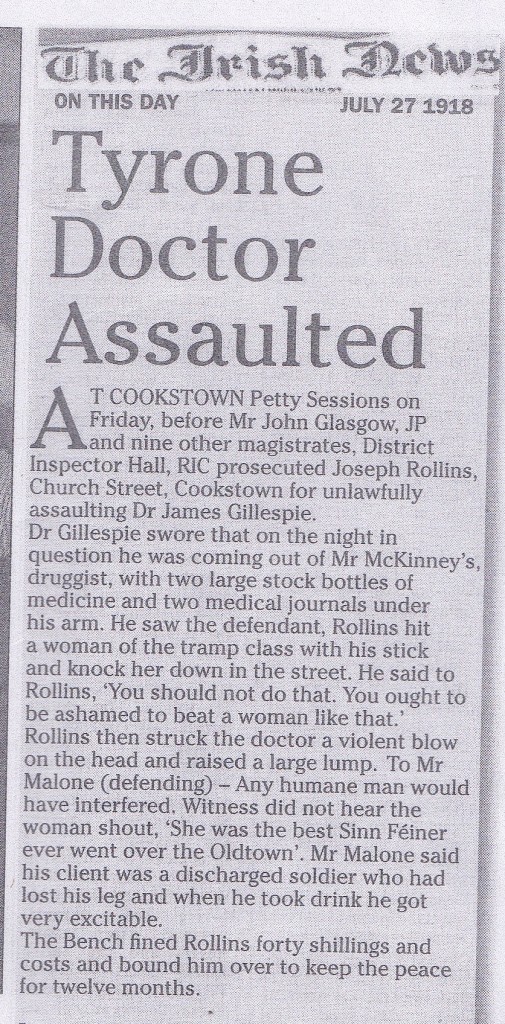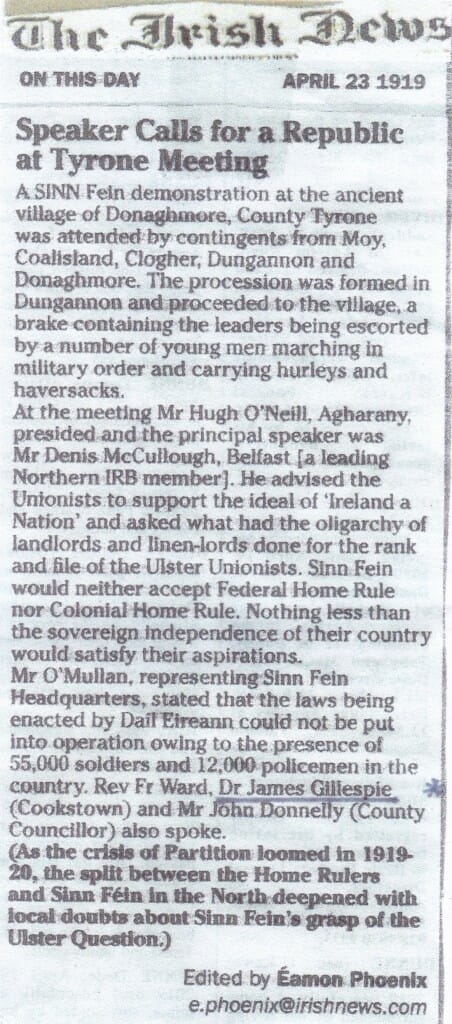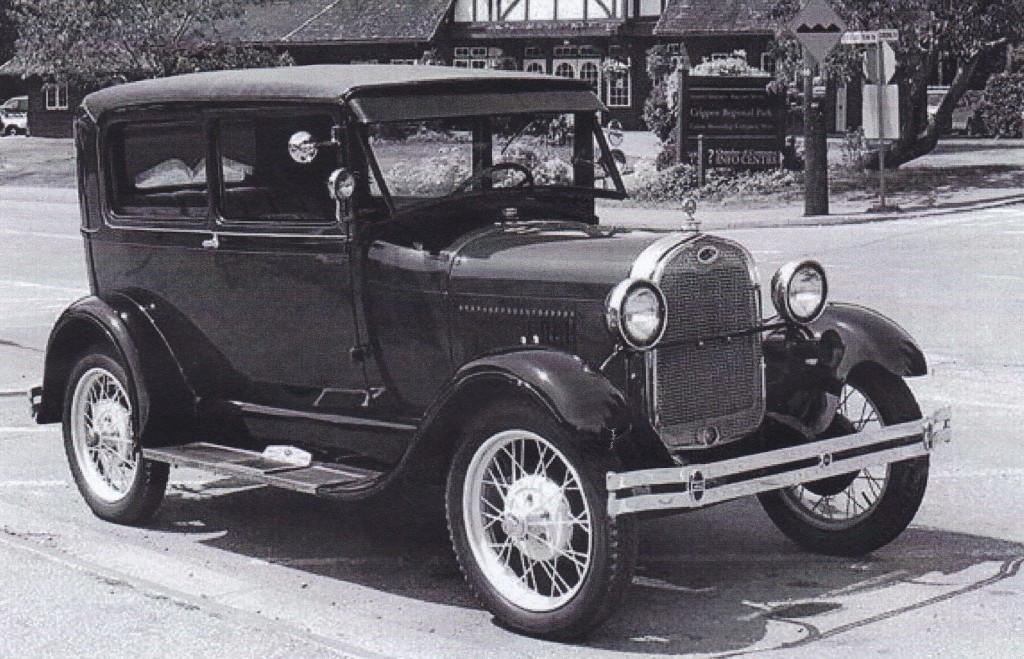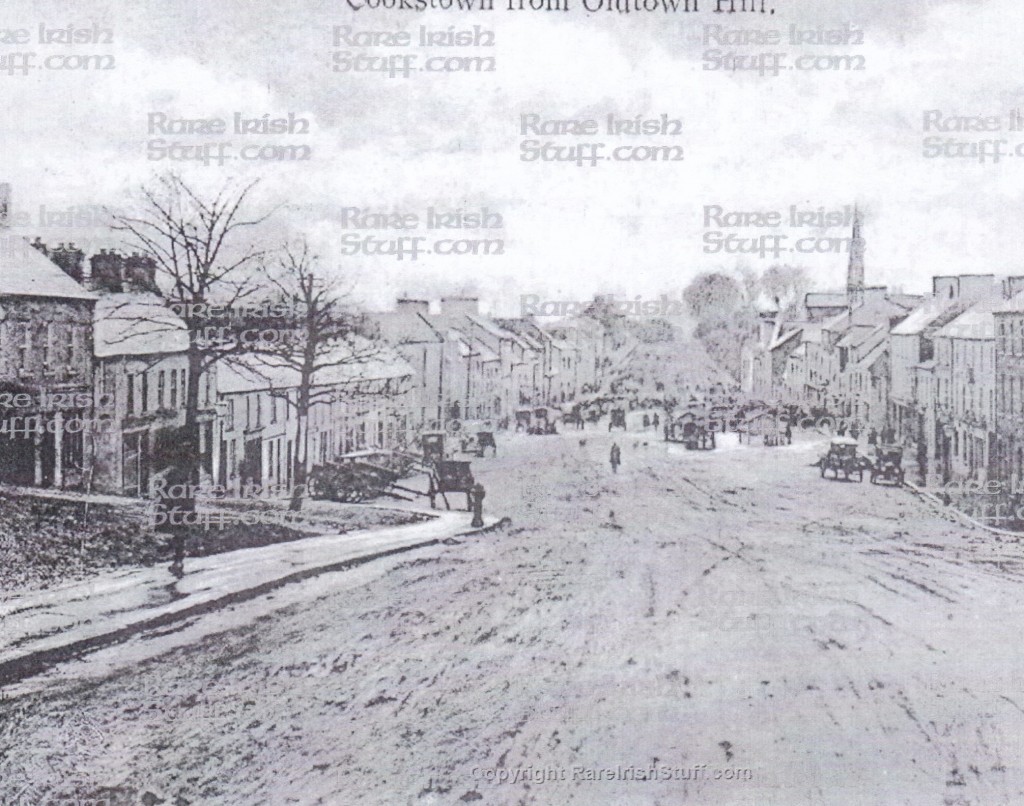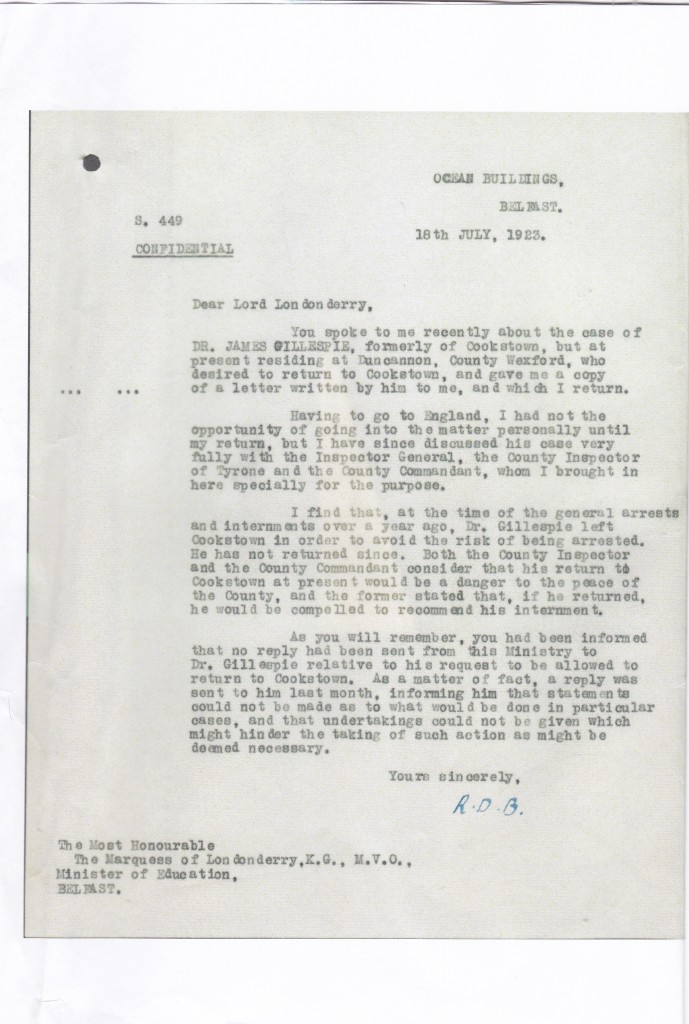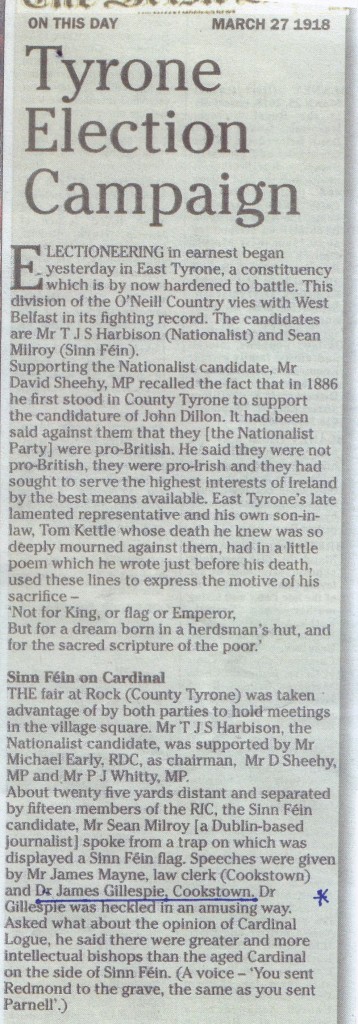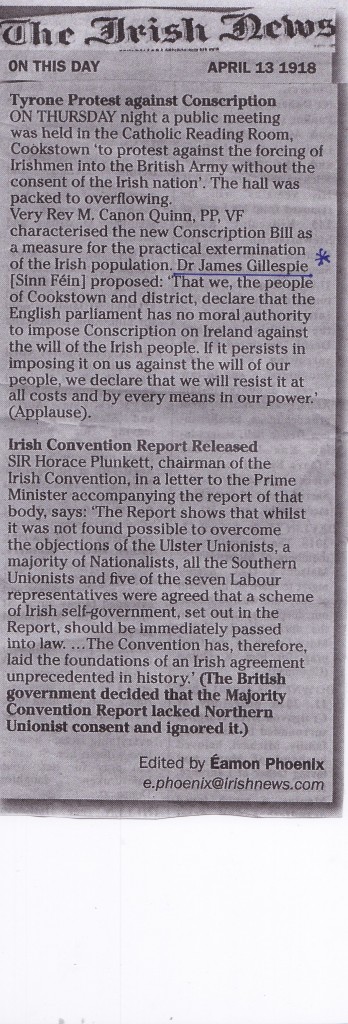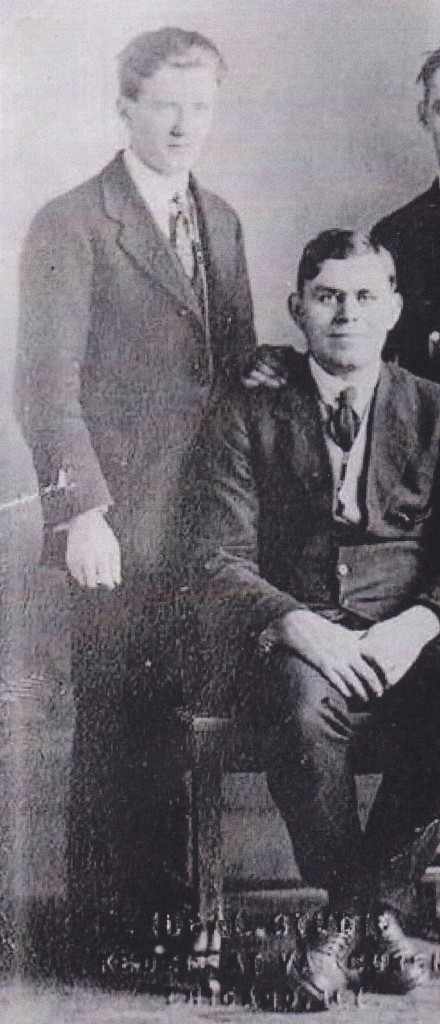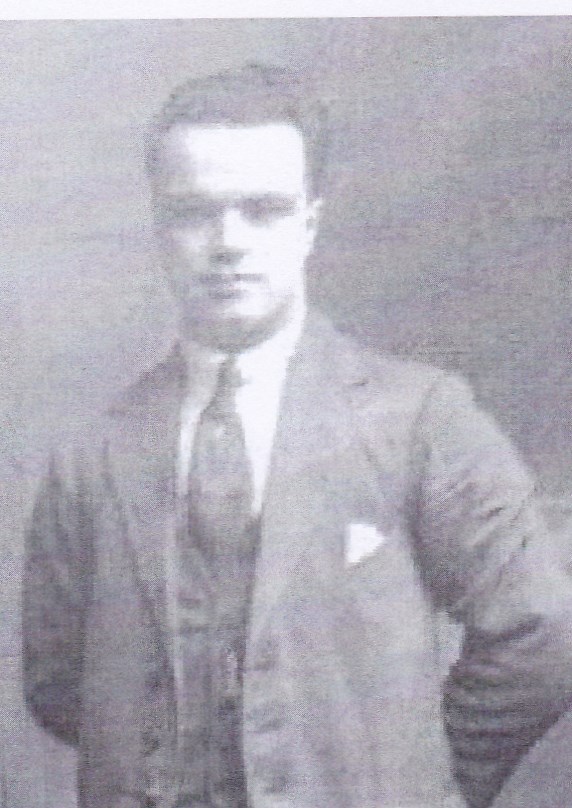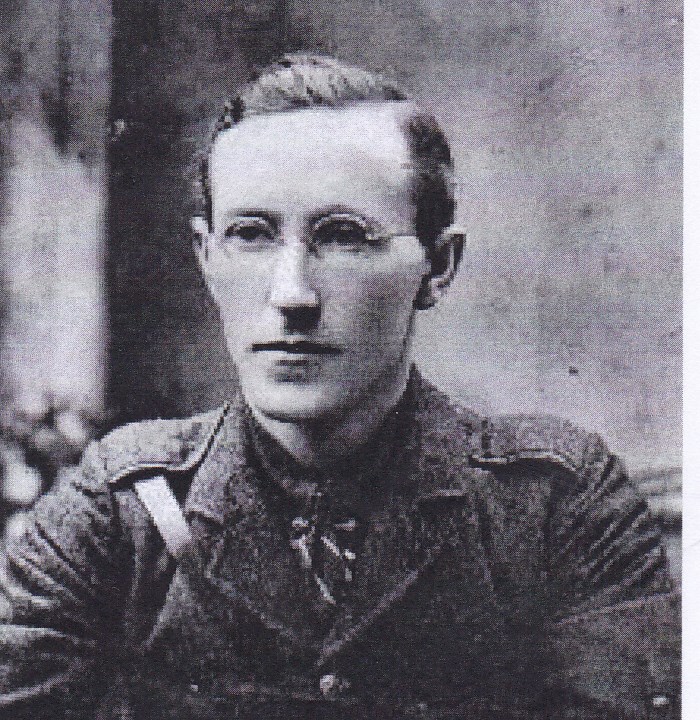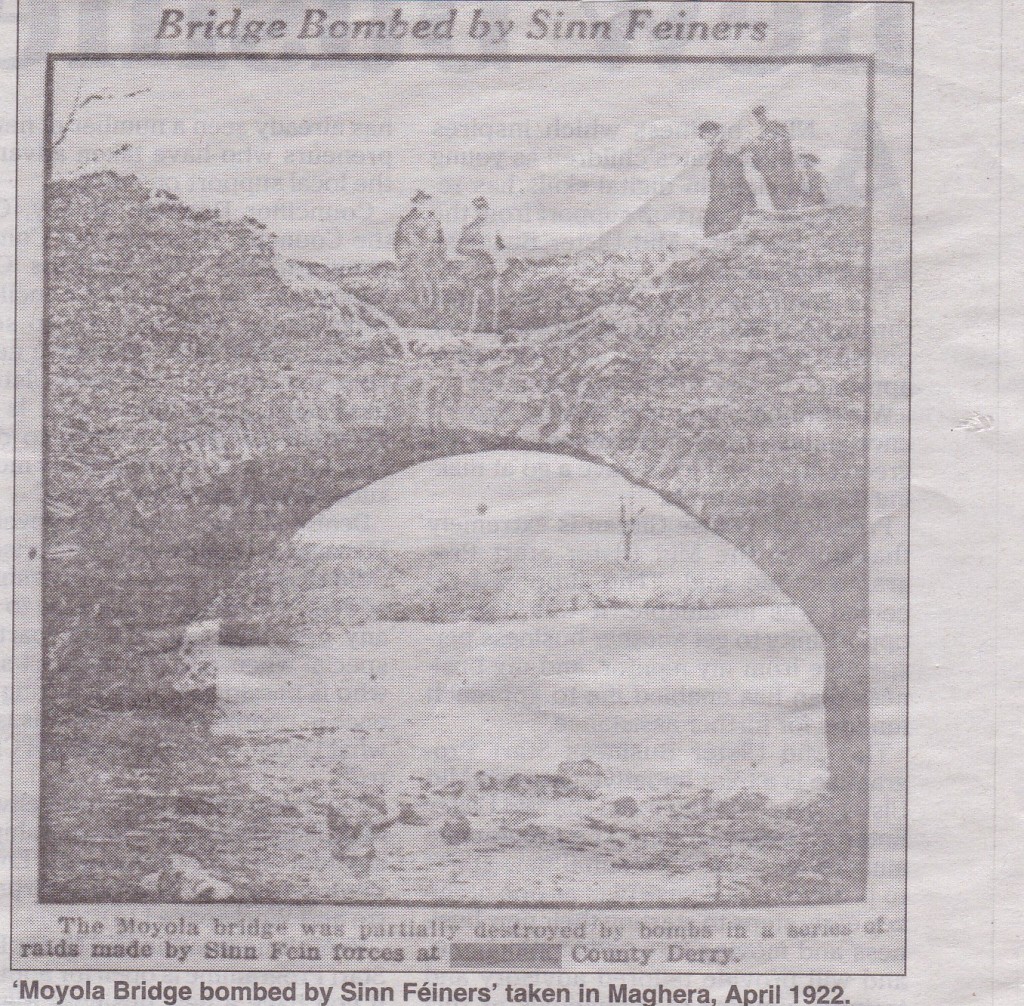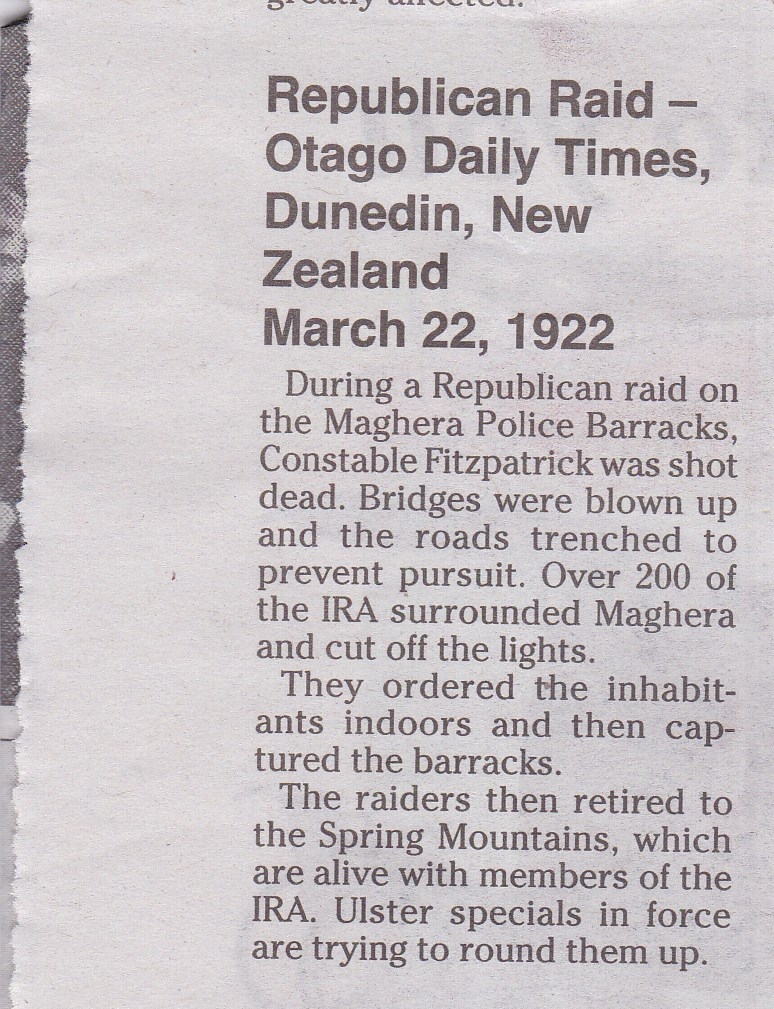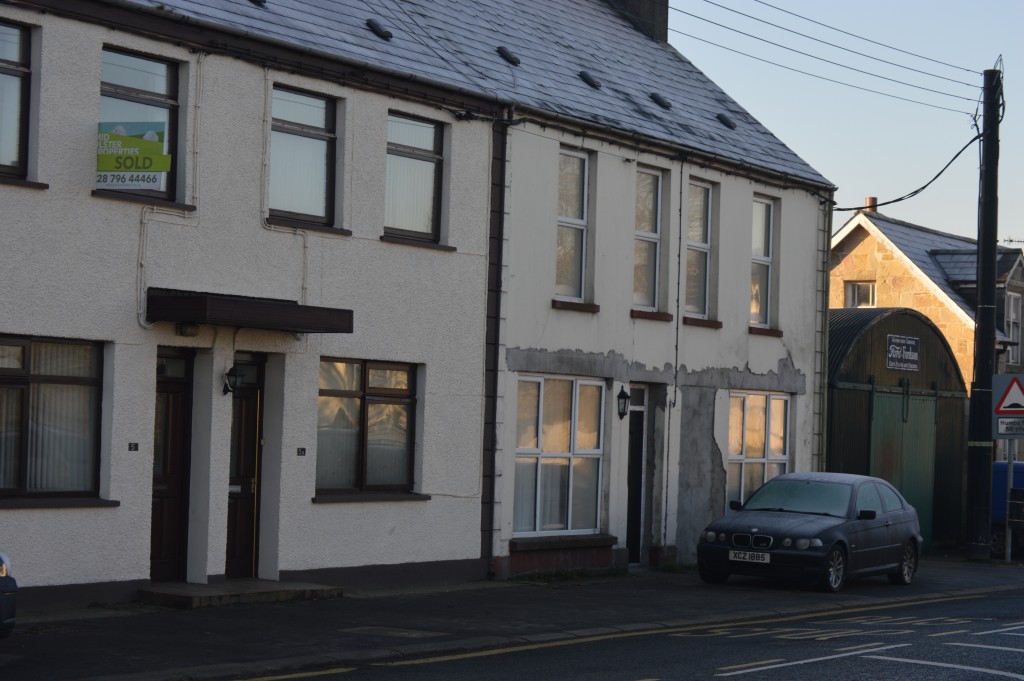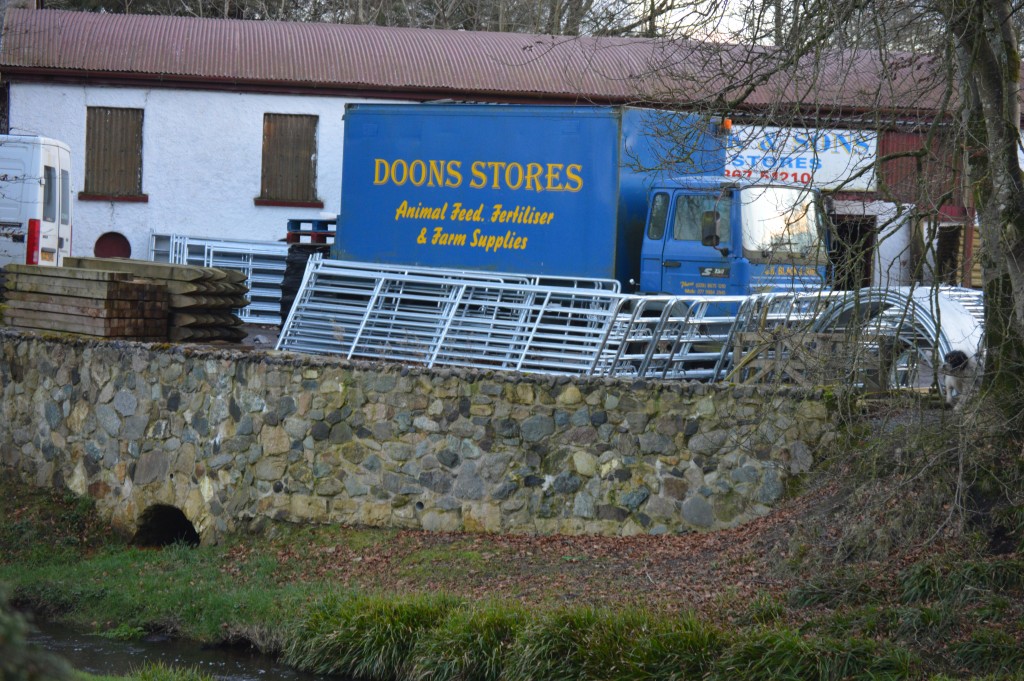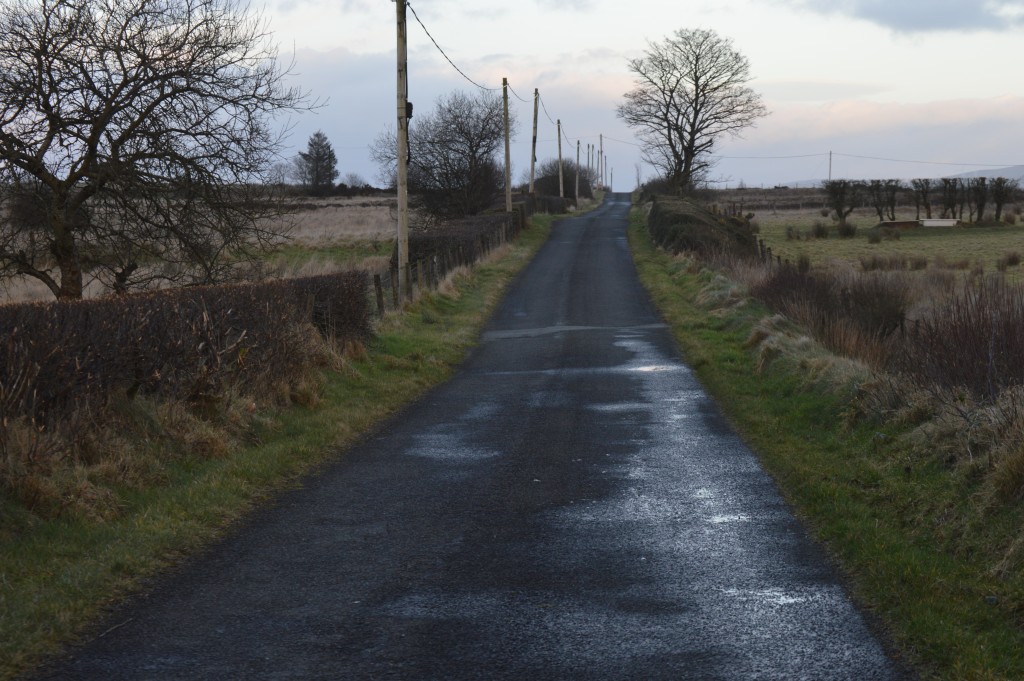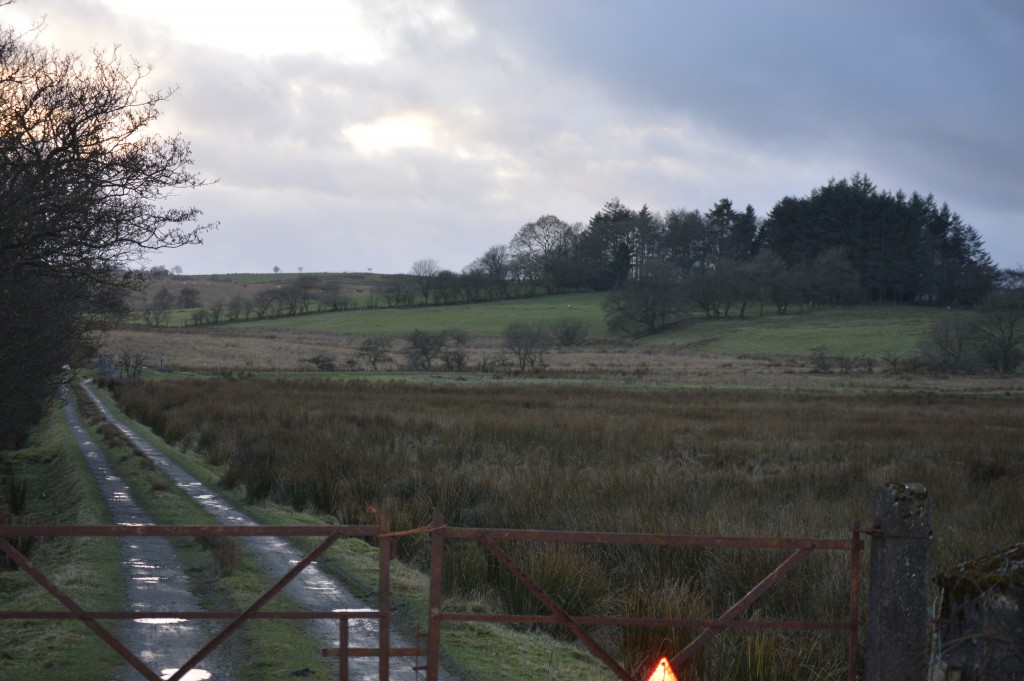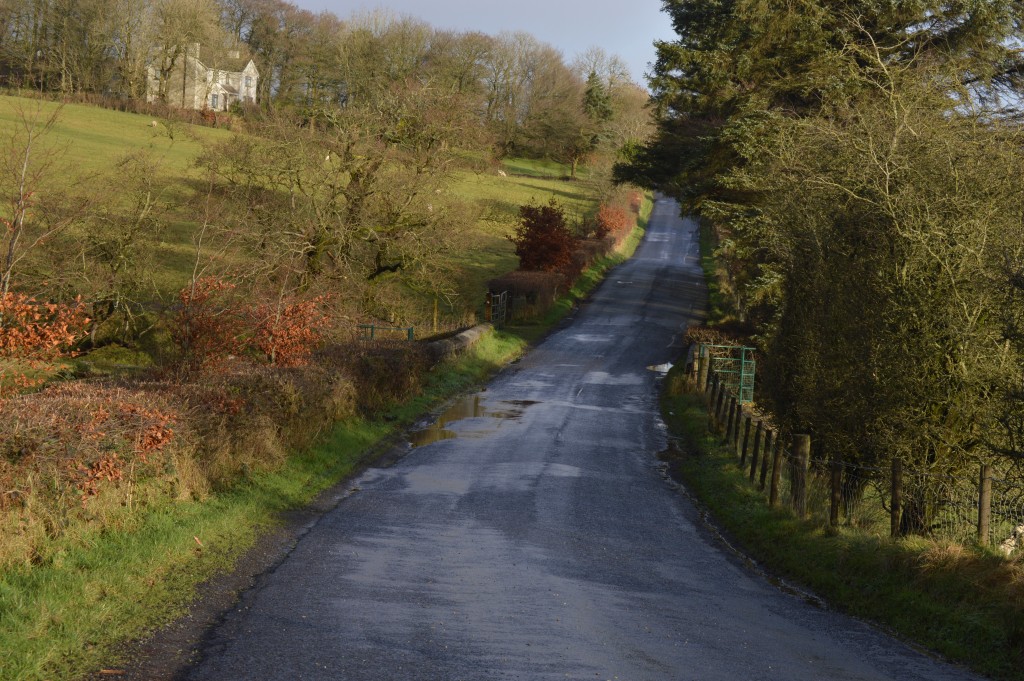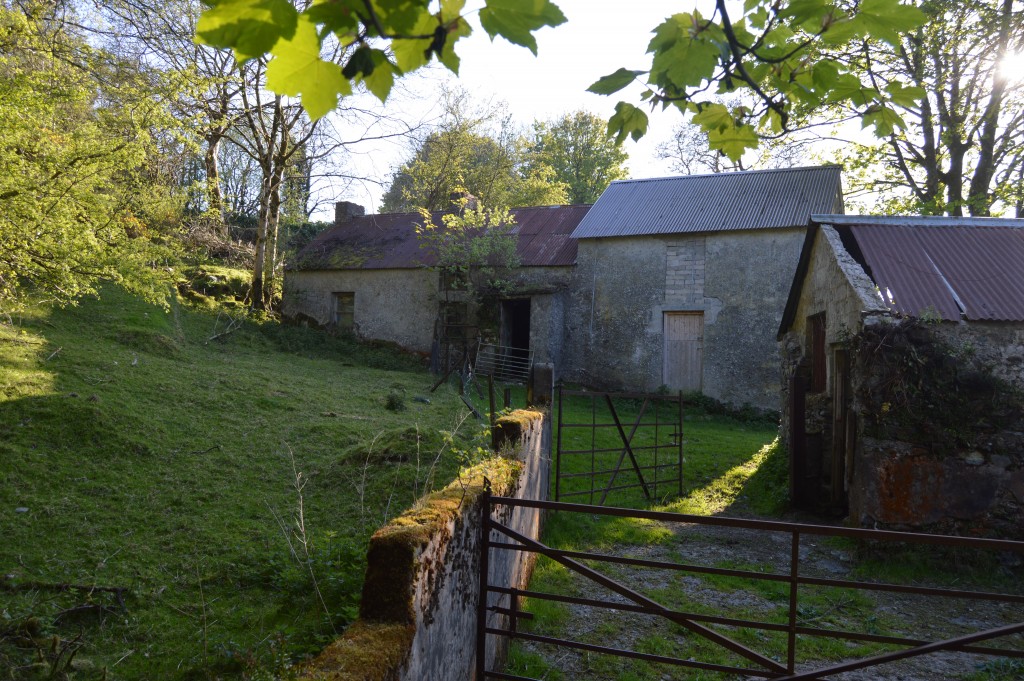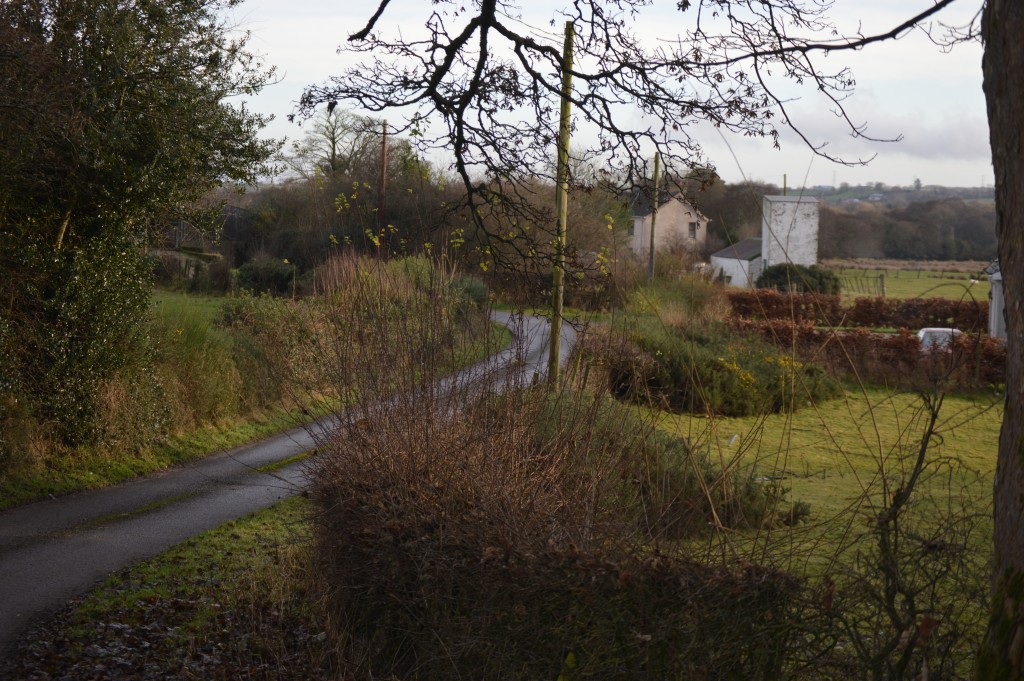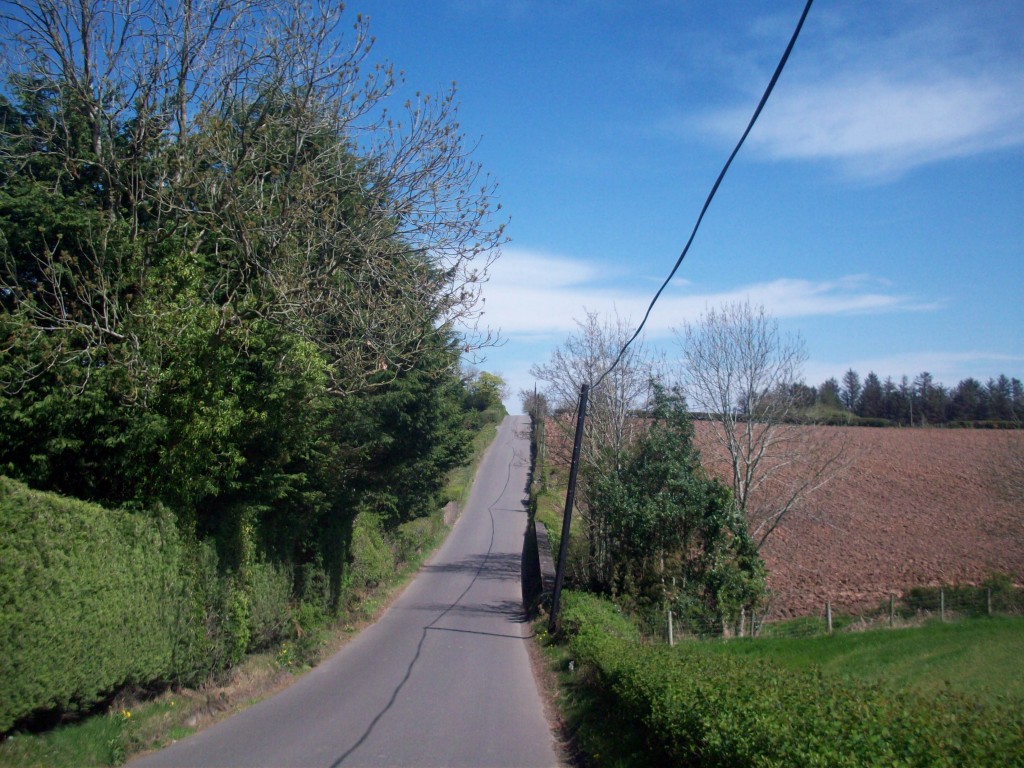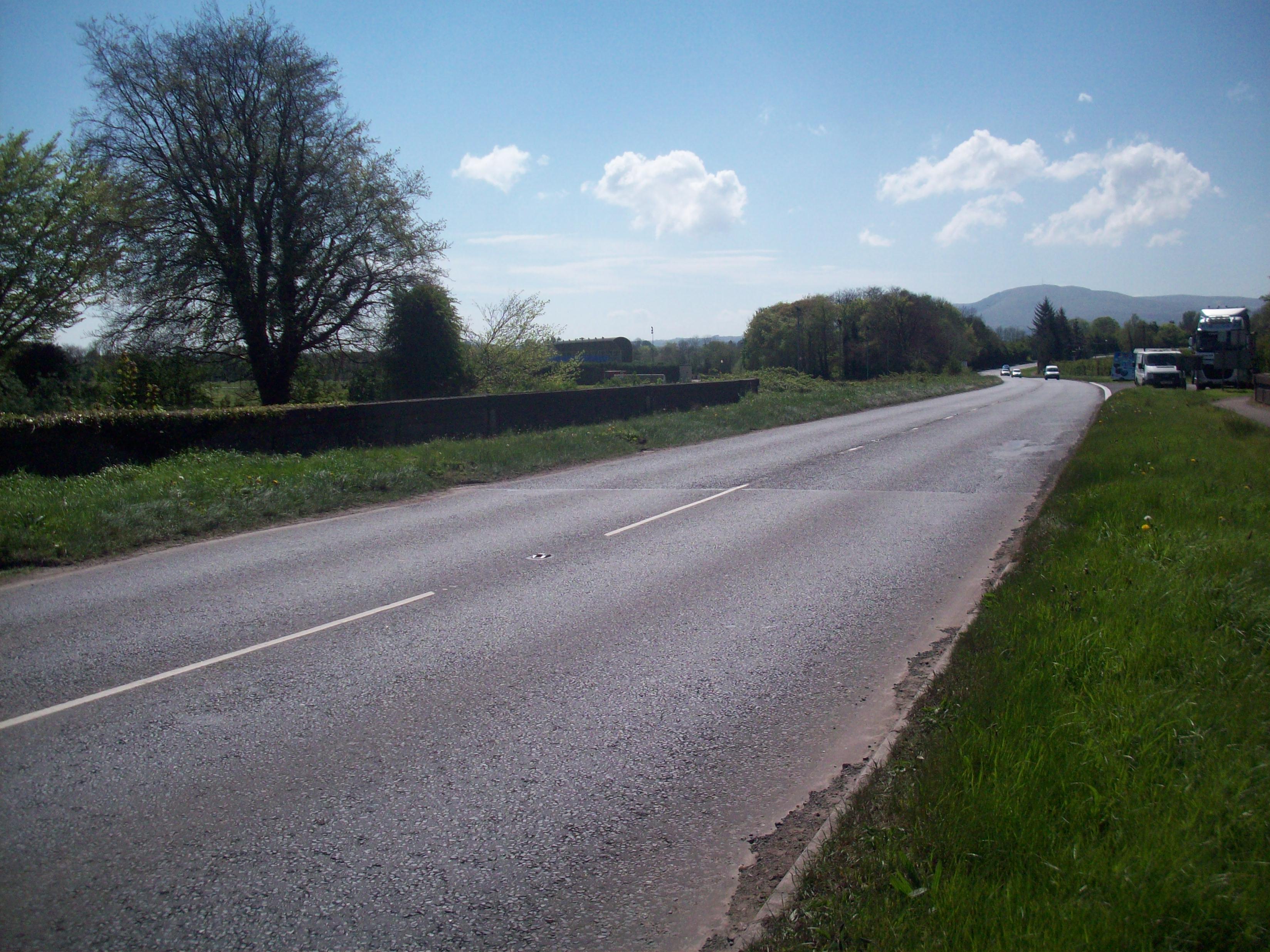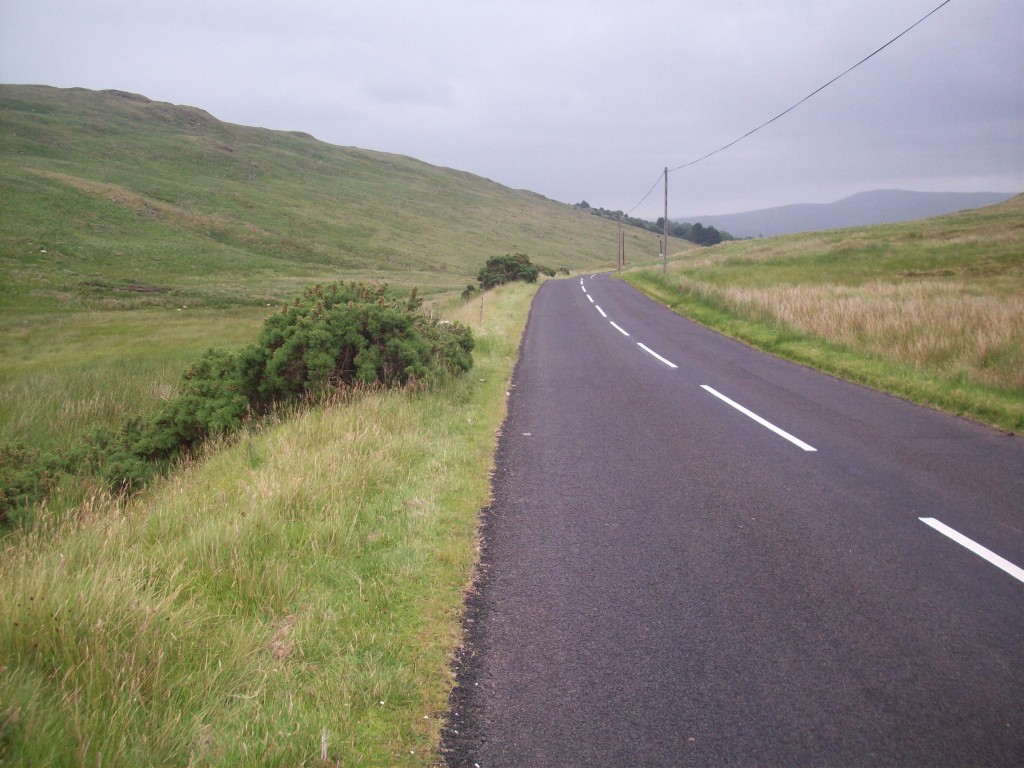A lost period in our local history in the Sixtowns comes to life again nearly a hundred years later.
The extent to which oral history survives often depends on how the people of the time valued its importance or how they viewed the point in retaining those memories. For example, many old people in the Sixtowns were reluctant to talk about the 1920/30`s era, as that was a period of great poverty and deprivation for many, as times were very bad, there was a lack of money and high levels of emigration. Times were very hard and people preferred to put them behind them. Troubles, war or murders were also something which were not spoken about in communities, lest it cause bitterness and division. Those things were just not talked about in the house. It is possible that this was the case with the era of troubles in the period 1919/23 in the Sixtowns area. It is actually surprising to find that the families of those people involved in this era know very little about the happenings of that period. They say that their parents never talked about it to them. It is no surprise then that the surfacing of information which was not hitherto known about in the locality, should generate such interest.
The HQ of the 2nd Northern Division (Glenviggan Camp) was situated at the top of the picture, at the site of the house which you can see in the trees, just to the left of the road.
A period of history was almost lost and forgotten in the Sixtowns until a remarkable turn up came to light a few years ago. A box of audio tapes turned up in the Cardinal O’Fiaich Library in Armagh
which were said to be recordings of the memoirs of nearly a hundred survivors of the War of Independence in Ulster which had been carried out by the late Father Louis O’Kane from Magherafelt in the 1960s. These tapes were digitised and made available to the public to listen to. Those of them which involved people from Ballinascreen revealed a history that few local people had been aware of. They held particular and significant pieces of historical interest to the Sixtowns. It has certainly generated a great interest among the local people of the area in an era in our history which had been all but forgotten. We owe a great debt to Father Louis O`Kane whose foresight and enthusiasm for local history has left us with a valuable resource. We are also most grateful to Donal McAnallen who co ordinated the O’Kane Tapes project,as well as his staff, particularly Roddy Hegarty who was so helpful to us with our research.
The Rev. Louis O`Kane`s recordings and how they help reveal a forgotten period in the history of Sixtowns and surrounding areas
Rev. Louis O`Kane, a native of Magherafelt and with relations in Draperstown, served as a curate in various parishes of the Armagh Diocese during his lifetime. He would get himself involved in projects involving the local history of the parish areas in which he served. He helped produce many valuable works of local history. He was sent to the parish of Lower Killeavy in Co. Armagh at some stage in the 1950`s and while he was there he celebrated the Silver Jubilee of his ordination. As a gift of celebration of his jubilee, his parishioners bought him a Grundig reel to reel tape recorder, a prized possession indeed in those days. This enabled him to set out on a project which had been his lifetime ambition, to record surviving volunteers of the War of Independence from all over Ulster, travelling long journeys to do so on many occasions. He succeeded in interviewing upwards on a hundred veterans and accrued more than 400 hours of recordings from the mid 1960`s until 1973. These tapes were to be kept secret until the interviewees had passed on and were looked after by a family from South Derry after Father O`Kane passed away in 1973. When the Cardinal O`Fiaich Library opened up in Armagh, these tapes were handed in to it and lay there for some time until Donal McAnallen took on the project of digitising them so that they could be made available to the public.
This article appeared in the Derry Post last year’
Although it refers to a gathering in the Marino Centre, it gives us some additional background to Rev. O Kanes tapes and the extent of his work.
The Ballinascreen recordings.
Louis O`Kane interviewed volunteers from the parish of Ballinascreen and this is where we discover a period of our local history which has been forgotten and no longer mentioned.
The following men from Ballinascreen were interviewed and their tapes are now available to study and listen to:
Paddy McBride (Daniel) Tullybrick.
This is the Paddy McBride interview and you can listen to it if you click on play.
Paddy lived at Crockban, Altayeskey and was a volunteer in the Company. He seems to have been a very busy volunteer who was involved in a lot of operations in the area. After the war he married Mary Kelly and worked his farm until he died in the mid 1970`s. A very good story teller, his tape makes easy and most enjoyable listening.
Thomas Kelly (Neilly) Labby.
Tommy Kelly in his Garda uniform in the 1920`s.
Tommy was the explosives engineer for the 2nd Northern Division. Left along with many other volunteers after the Treaty was signed and went to Donegal. Eventually joined the Guards and had a long and successful career there. A very clear talker, his recordings detail events which have the clear hint of a man who did many police reports.
Johnny Kelly (Neilly) Kelly . Labby.
Johnny was a brother of Tommy Kelly(Neilly) his role seemed to have been that of a dtriver and this job brought him to many incidents. After the war was over he ran a public house in Lissan. Talks on the same tape as Paddy McBride, Johnny comes across very clear and is entertaing throughout.
Tommy Toner (Pat Mathew) Straw.
Toner along with Fr. O`Kane.
Tommy was Captain of the B Company after the arrest of Joe Donnelly. Went to the USA after 1923 and fought as a professional boxer in New York. Had a brother Joe who was a volunteer in the B Company. He returned some years later to Ireland and bought a farm in Co. Meath where he spent the rest of his life.
A clear and robust speaker, he gives the impression at times that “ you better believe what I`m telling you!“ when he is talking and even the interviewer thought that he was going to be thrown out of the house at times as he questioned Tommy`s detail.. Memory was not as good as he thought at times but he draws deeper reflection from the listener, more so than any other interviewee.
Tom Morris (Moneymore)
Photos taken from book : Reflections on the Revolution in Ulster.
Morris was Officer Commanding 2nd Northern Division and based at Glenviggan. Was a soldier attached to the Enniskillings in the WW1 who reached the rank of Major by the end of the war. He returned and got involved in training IRA volunteers in the South Derry area. He was head hunted by Michael Collins to take command of the division. Had the reputation of being a ruthless and fearless soldier. Also left for Donegal in 1922 dressed as a priest, something which he often did when on top secret missions. Settled in Moville where he became chief commissioner of the Fisheries Board.
Speaks very calmly and is most interesting to listen to, as he reflects on a wide range of issues.
How did the Sixtowns area become associated with the IRA campaign of 1919/23?
As we listen to the recordings of the local volunteers we realise that the Sixtowns was a focal point in the campaign because the HQ of the 2nd Northern Division was sited there in the townland of Glenviggan. This Divisional Area took in most of Tyrone as far away as Dungannon along with the whole of County Derry. The siting of the Headquarters of the 2nd Northern Division in Glenviggan was much to do with its location. Geographically it was at the centre of the divisional area. It was also situated in a very remote place which was not easily reached by the British or RIC. As well as that, it lay at the edge of three different policing areas, Omagh to the west, Cookstown to the South and Magherafelt to the east. It would have been easy to flee move from one area to another, leaving police commanders confused as to which of them would be responsible for investigating it.
The Glenviggan Camp was at the site of the house which lies in the hollow in the photo above.
In the period approaching the Truce, the IRA Leadership in the South decided that units in the North needed to be better organised and armed so they could intensify the campaign in that part and thus stretch the British over a wider front. Some of their top officers were sent up to the North and they set up in a half built house in Glenviggan on land owned by a man called John (Jamie Ned) Bradley. Ironically this house was being built as a retirement home by John`s brother, Father Bonaventure , who had been a Chaplain for many years in the British Army. Many prominent IRA leaders stayed there at various times, including General Eoin O`Duffy who was the OC of the 2nd Northern Division for a while after the reorganisation, as well as Dan Breen, Dan Hogan and Liam Lynch who visited the Sperrin camp and would have stayed at Glenviggan too. Later, Tom Morris, as OC of the 2nd Northern Division, would have been stationed there and others like Charlie Daly (Kerry), Rory Graham (Belfast), Frank Strong (Donegal) and Paddy Crawford (Coalisland) would have stayed there as well.
What the O`Kane tapes reveal about that period of IRA activity from 1919 to 1923 in the Sixtowns and surrounding areas.
The lead up to the formation of the IRA in Ballinascreen
Prior to the First World War, in most parts of Ireland there would have been the organising of the Irish Volunteers under John Redmond going on. There is a tradition of National Volunteers being trained in a field in Altayeskey at a time. John Jamie Ned was an avid supporter of the emerging IRA and was not much impressed by the Volunteers` activities or intentions. He sent a neighbour, Barney Conway, down with his gun and dressed in a British Army officer`s uniform belonging to his brother, the priest. Barney arrived as the Volunteers were parading in the field and he shouted out “Halt” and fired a shot over their heads. Faster than the bullet was travelling, every man disappeared down into the glen, except old Mick Conway, a former soldier, who stood in disgust at the flight of all his men. He shouts to Barney, “Fire again, you missed !”. The Volunteers never forgave Barney.
. John did not have much time for these boys because by this time a split between The Redmondites and the IRA was developing over whether Irish Nationalists should be fighting for Britain in the war. This split led to many volunteers from all over Ireland heading to the War in Europe while others pledged to fight at home for Ireland`s freedom. In the Ballinascreen area not many volunteers left to join the British Army. That is all we know about any political or military thinking in the area at that time. However, again as in most parts of Ireland, the executions carried out by the British after the 1916 Rising, aroused strong anti British sentiments and then a growing sense of patriotism. Tommy Kelly (Neilly) talks about being a senior pupil boarding in St. Columbs College in Derry and how strong feelings of patriotism were growing among the boys. They found old replica guns and would parade up and down the lawns every day and how they hoisted the Tricolour on the old tower in the college grounds. He remembered Dean McGlinchey telling them as they left for the summer break to be aware of what was happening in their country and not to regret playing their part at some time later on in their lives.
The Tommy Toner interview gives an interesting account of how the local IRA Company came into being . He tells us that in 1919 his uncle Frank O`Hagan was home on holidays from America and he set about gathering together committed volunteers to form a company in the district and become registered with GHQ in Dublin. Joe Donnelly, from Labby was elected Captain and Tommy himself was elected first lieutenant. Then on Halloween night 1919, Joe McKelvey came up from Belfast to swear each volunteer into this IRA company.
Both Joe Bradleys, Joe Toner, Mick and Eddie O`Neill, John Kelly and Mick Donnelly were among about 12 to 15 men who signed up at the start. The Ballinascreen Company was then part of the 2nd Battalion, 3rd Brigade, at that time called the Tyrone Brigade. Shortly before the Truce came in, Owen O`Duffy came up to reorganise the Northern Brigades and on the very night before the Truce, the officers of the Ballinascreen Company got their rankings. They were then recognised as volunteers in B Company. Tommy tells us that there was very little activity in his company area especially in 1920. The reason for this he explains was that with the HQ of the2nd Northern Division being situated in the area (Glenviggan) the IRA did not want attention drawn to that part of the country.
The B Company, like all the others in the surrounding districts was, at the early stages, poorly equipped and poorly trained and ill prepared to take the fight to a well armed enemy.. This situation would improve somewhat later on as training camps like Maghera and Sperrin were set up and arms were shipped north to Donegal and then dispersed to places like Ballinascreen and other areas in South Derry. Tommy Neilly Kelly gives a detailed account in his interview, of how guns and ammo were smuggled in an oil tanker across from Lifford to a rendezvous in the Sperrins between Strabane and Plumbridge. There vehicles were waiting to take the guns to their intended destinations.
Due to the fact that arms and explosives were in short supply, the men of the local company had to improvise at times and both Paddy Daniel McBride and Tommy Kelly give accounts of making buckshot and grenades in John Jamie Ned Bradley`s house at night, ably assisted by John and his two elderly sisters. Tommy also talks about making mines in a disused house belonging to a Sheerin man in Glenelly. Tommy Toner talks about how a low quality explosive which they called Cheddar, was secretly delivered to Gormley`s shop in Draperstown and labelled as something else.
Transport and communications.
This was the type of car which the local IRA company used in 1921/23. This car was the famous Johnson`s Motorcar which was hijacked in Donegal and eventually made its way to Ballinascreen where it was hidden in a turf stack near the county march on the Glenelly road.
Tom Morris is standing beside an old Model T Ford which he would have used around the Sixtowns and surrounding areas when he was there.
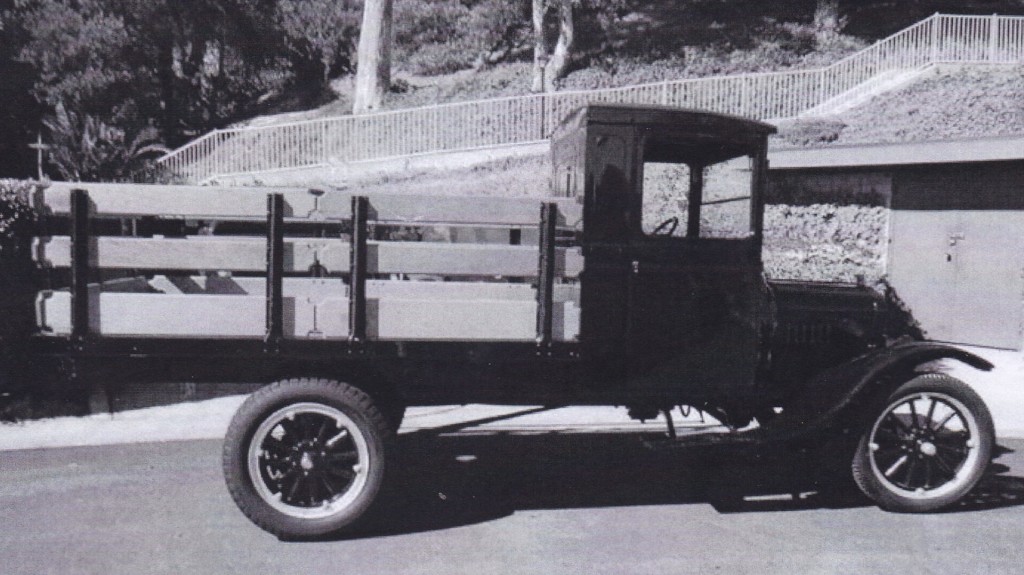
Photo above: This is what the lorry used in the Draperstown Barrack attack might have looked like
This is the same model of motorcycle as the one which was taken from constable Doyle at Shibby`s crossroads by the local IRA. Liam Lynch, IRA Commander in Cork used it to get back home again after visiting the area during the Truce in 1921.
It is important to remember that Ballinascreen was a relatively poor area at that time, where most people made out a living on small farms and there was little employment in the town either. Few people could afford a car and the main means of travel within the area was by horse and trap/cart, bicycle or simply on foot. Therefore the task of moving volunteers, arms or explosives was always challenging. Paddy Daniel McBride tells about himself and Dan Mullan heading off from Sixtowns with a bundle of rifles tied on each one`s bicycle and riding in the dark to Lisnamuck, the night before the Moyola bridge was blown up. Indeed the fact that the volunteers had to carry the mine which weighed over two hundred pounds, on their backs as they walked more than two miles to the bridge from Lisnamuck, shows how cumbersome and laborious their operations were in those times. Tommy Neilly Kelly tells us how he had to bring part of the mine to Pat Butler`s house in Derrynoid, to be relayed cross country to Lisnamuck in preparation for the attack on the bridge. He said that Pat immediately put the mine parts on his wheelbarrow and headed off wheeling it down the road whistling “ The Wearing of the Green” as he went.
Sometimes there would be the need to borrow the odd bicycle to get to destinations. Tom Toner talks about taking a bicycle from Moneyneena chapel on his way to the Moyola Bridge. Bicycles were a popular means of travel in those times.
Tom Morris tells us about himself and Frank Donnelly making their way home up the Sixtowns road after the attack on Draperstown barracks. They both walked because only Morris had a bicycle. Indeed Morris was heading on a bicycle to a meeting in McCracken`s pub when he was ambushed in Broughdearg shortly after that.. There are many stories about various people using bicycles to go on operations like the men who were on the Moyola bridge operation and how they left their bicycles in a field near Lisnamuck to be picked up on their escape after the job was done.
Tommy Toner talks about bringing supplies to the camp in Sperrin using his own horse and cart. Paddy Daniel told about the day himself and Tom McSorley were removing explosives from the Glenviggan camp when it was being decommissioned at the end of the campaign and how they nearly got shot when Tommy Neilly Kelly accidently discharged a revolver . They were using Tom`s horse and cart to take away the stuff. Again when Tom Morris got shot in Broughderg , he was sent firstly on horseback to the Sixtowns but after he and the horse fell into the broken bridge, he was taken on to Donnelly`s at Labby in McNally`s horse and trap.
The local company did have a car for their use by 1921. This car was used for longer missions and Johnny Neilly Kelly was the usual driver. Tommy Toner tells us that this car was taken from a man in Tyrone who refused to pay the IRA levy put on him. However, local folklore claims that this was indeed Johnson`s motor car whish was hijacked late in 1920 near Ballybofey and made famous by the song, Johnson`s Motor Car. This car was hidden at first near the county march on the road to Glenelly until the hunt for it died down. A turf stack was built around it until it was recommissioned as the `company staff car. It was a Model T Ford and it was used as a taxi around Labby for years after the war.
Various interviewees talked about lorries being used occasionally where a larger number of men were needed, like Doon`s and Draperstown. These were simply borrowed for short periods and later returned to the owners.
The odd motorcycle was acquired too. Tommy Toner tells about constable Doyle`s motorcycle being hijacked at Shibby`s crossroads on the night of the attack on Doon`s Creamery. This motorcycle was kept at Sperrin camp and when Liam Lynch visited the camp, he swapped the one which he came on for Doyle`s and hence it disappeared to Tipperary or somewhere. Tommy Neilly Kelly tells about riding it to Doon`s Creamery that night and that he and his passenger ended up in a meadow in Altayeskey because he had never ridden a motorcycle before.
It is even claimed locally that the Moyola river was used to transport munitions down the country. There would be volunteers waiting some distance downstream to rescue the cargo. There would have been less chance of these munitions being intercepted using this method of transport.
Journeys on foot were the traditional means of travel over countryside and mountain terrain. Volunteers would take mountainous routes to escape tight situations or where the wish to travel in secret. Local folklore tells of a group of volunteers under the command of Tom Morris, arriving at McSorley`s in Moyard one morning tired and wet after walking for most of the night. They were all dried out and bedded down for a much needed sleep. Young John McSorley was put out of bed and sent down to the main road to do lookout and was not too pleased. Later on a neighbour on his way to mass stopped to chat to John and he asked him what he was up to. “I think I`ll go back home, join the IRA and go to bed” said John.
It is noticeable that on listening to the recordings of former volunteers that their recollections of events differ a lot from each other. This can be as a result of fading memory or indeed their personal or individual perspective on each event at the time and how that tended to affect their recollection of them in later years.
Another perspective on what happened in those incidents which the tapes cover in the district at that time, is given by the Mid Ulster Mail in March 1922. This would have been seen as the other perspective on these events at the time ……… in other words , a Unionist one. Everybody will naturally see things from their own perspective and we must accept their points of view as part of our quest for the true facts. It is worth listening and reading all accounts given of the happenings of that era. Indeed there are many different versions given on particular happenings by interviewees on the tapes.
Communications, safe houses and people who assisted the IRA.
No guerrilla army can operate with any effectiveness without help and support from within the local community in which they operate. Support, it seems was far from widespread in the area but sufficient help seems to have been given when it was needed in most cases.
Most interviewees talked of the McQuade family shop in Draperstown, which was a centre of communications. Most correspondence concerning the 2nd Northern Division would come to McQuade`s shop. There was also a network of women in the town who would provide assistance when needed. Tom Morris mentioned a lady by the name of Cassie Dougan who lived in Draperstown who did a lot of work for the IRA in the area. There was also mention of a young girl who stayed with Cassie who used to carry a lot of dispatches between Draperstown and Dublin.
Often couriers were needed to carry dispatches from the Glenviggan Camp to various places and vice versa. Volunteers would be used for this role because sensitive information might be involved in some instances. Tommy Kelly tells about young volunteer Frank McNally on his way, most likely from Sperrin Camp to Glenviggan HQ. He felt tired and lay down for a rest in the heather close to the Sixtowns road and fell asleep, only to be awakened by the sound of police tenders coming to a halt on the road near him. Thinking that he was spotted he lay on in the heather sweating in case he would be caught with the despatch. Looking around him for a place to conceal the dispatch he found a dried up cow clap, lifted it up and slipped it underneath it. Luckily the tenders moved on, unaware of Frank`s presence after all. Carrying and delivering despatches was a very important part of the war effort.
Tommy Toner talks about how Gormley`s general store in Draperstown was used to deliver items and explosive material which they called “cheddar”. Obviously there had been a friendly employee working in the store who handled those deliveries for the IRA.
There were even “friendly policemen” in the Barracks who would provide low level help or were simply of a friendly disposition to known IRA members. Tommy Toner talks about the night he held up constable Doyle on his motor cycle at the cross roads near Straw and took him as a prisoner, along with a group of volunteers as they headed to burn Doon`s Creamery. Both Tommy and Doyle made their own way home in the morning. As Tommy made his way out of Draperstown that morning, who did he meet on the street on his way back to his barracks, but constable Doyle. Doyle bade Tommy good morning and he returned the greeting as both continued on their way as if nothing had happened. Tommy Kelly said that on the night of the attack on Draperstown, that a `friendly` policeman made himself and another constable available for capture by doing point duty at the Big Bridge outside Draperstown. The IRA took them prisoner for a while in order to “borrow” their uniforms for use later as they hoped to trick their way into the barracks.
Tom Morris said that there was a friendly policeman by the name of Staunton in Magherafelt barracks but that the IRA never tried to get into it.
Interviewees tell of other people like Doctor Donnelly being sent for to treat Tommy Toner and Tom Morris when they were wounded and how he obliged even if it was a very risky thing for a doctor to do in those times. Father Walsh was called on to administer to the dead on at least one occasion.
Safe houses.
Connolly`s Moyard (top)
McSorley`s in Moyard (above)
Then there were the safe houses which were so essential to the IRA. Often the same safe houses where well known IRA members stayed, would be mentioned in the interviews but many other houses would have been used at different times and were not mentioned. The homes of volunteers in the Company would have been used regularly for meetings or for putting volunteers up for the night. Tommy Toner talks about being treated for his wounds in a safe house in Labby. Paddy McBride talks about doing guard for Charlie Daly when he stayed with an old couple in Moyard. He also talks about two prisoners escaping from a house where they were being held, in Glengamna. Rory Graham was arrested in a safe house in Labby and two other volunteers Paddy Hurl and Harry McKeown were captured in another nearby house in Glengamna on another occasion.
McConamy`s in Glengamna.
This is the house where Henry McKeown and Paddy Hurl were arrested. The photo was taken after a christening with Paddy McConomy and his wife Annie on the right and sponsors and next door neighbours Peter and Roseanne McConomy on the left. This photo was taken in 1922.
Tom Morris , Paddy Crawford and a volunteer called McNally escaped capture on the same night by climbing out of the back window of another safe house, Donnelly`s in Labby and heading up Labby Brae.
Donnelly`s in Labby
Tom Morris also talks about the house of Owen Quinn in Broughdearg being extensively used as a safe house. He was actually coming from there the night he was ambushed and wounded. (Owen Quinn`s house was in the bushes on the right of the photo.)
This was Mick O` Hagan`s house in Glengamna where the Quinn brothers from Beaghmore , were held prisoner having been suspected of being informers. They eventually escaped or as it was believed at the time, allowed escape and headed back home and were never bothered afterwards. Mick O`Hagan was a lieutenant in the company.
When writing about the IRA getting help from the local community, it is worth mentioning that help sometimes came from the least expected sources. Lieutenant Dan Mullan of Altayeskey had Protestant neighbours on the farm beside him who would keep an eye out for any police activity or strangers in the area who might represent danger to Dan. Tommy Toner tells a story about another Protestant man from the Sixtowns approaching him to tell him that he had been attacked by a gang of men on his way home from Draperstown. He believed that these men were IRA men and that they stole his bike. He wanted Tommy to intervene and to get his bicycle back for him because he knew that Tommy was an officer in the local company and trusted him to help him. Tommy knew that the gang were not in the IRA and after paying them a visit returned with the bicycle. The man was most grateful and gave Tommy a box of cartridges as a reward for his help. This shows how there was a guarded respect for each other, among many local Nationalist and Unionist people of the area.
Reflections on how it all ended as revealed in the tapes.
The IRA campaign in the Ballinascreen area started off rather slowly, with little of any consequence happening from the founding of the company in 1919 until 1921. Tom Morris rued the fact that lack of arms and training severely hampered the IRA operations in the area in the earlier period 1919 to 1921.
With the push to intensify the campaign in the North by the Headquarters in Dublin just before the Truce in 1921, things began to look up and there was a feeling that the campaign in the local area was about to take off. Tom Morris tells of his tireless efforts to bring arms to the Divisional area. Even after the Division moved to Donegal in 1922, Morris was still procuring guns in order to keep up the fight. However after the signing of the Treaty soon afterwards, the campaign just seemed to peter out. The 2nd Northern Division held an open air meeting on the side of McNallys mountain in Glenviggan and it was decided, by majority, that they would support the Treaty. This would seem as strange as "turkeys voting for Christmas" as they were in fact openly accepting the partition of that part of their country which they espoused to represent. However, it is possible that they were heavily influenced by Michael Collins who had promised that they could achieve their aims through the workings of the Border Commission which was about to come into operation shortly after. In fact, this never happened and Collin`s promises proved to be hollow.
Tom Toner seems to hint at the presence of an alternative agenda among some senior officers in the 2nd Northern Division at this time as several of them went on to achieve prominent positions in the South after Civil War ended. Charlie Daly refused to accept the Treaty and parted ways with his former comrades to fight for the Irregulars. Others returned to their farms or emigrated in a sense of disillusionment and despair, never getting involved again for the t of their lives. Another incident seems to have a profound affect on many local volunteers was the s of volunteer Mick Donnelly. There are conflicting accounts of how he died but it certainly was followed immediately afterwards by an exodus of senior members of the Divisional command to Donegal and the burying of arms in the Company area. There is mention the tapes bad row at a football game at Straw, between the local Hibernians and the local Sinn Feiners about who shot Mick Donnelly. Two stories and no conclusions.
Perhaps, on the other hand, volunteers felt that their fate here in the North was already sealed and that there was no point in carrying on. Charlie Daly refused to accept the Treaty and left the Sixtowns for Donegal along with Sean Larkin and a few loyal volunteers in order to continue the fight. The new Stormont Government took control of the Six Counties and with the help of the B men and the introduction of internment, there was no other option for the more prominent IRA men but to head for the new Free State for safety. Under the command of Tom Morris, the remnants of the 2nd Northern Division moved to East Donegal and close to the border with the intention of attacking the North from there. The Civil War had started and this group managed to stay neutral right up until its end. Meanwhile at home arms were dumped and camps closed down as the Northern Government upped the pressure of Republican areas. Paddy McBride tells about himself and Tom McSorely clearing out all the dynamite from the Glenviggan camp after it was evacuated. Over the next 80 years or so old guns would be inadvertently unearthed from where they had been dumped in the aftermath of the campaign.
It was here on McNally s mountain in Glenviggan that the 2ndNorthern Division met to discuss whether to accept the Treaty in 1922.
Here are a few examples of finds in the Sixtowns area many years later:
Three old rifles dug up with a plough in Altayeskey.
Old revolver found in the thatch of a house in Moneyconey.
An old Mauser rifle found in the side of Tullybrick glen.
A short arm of some sort ploughed up in Labby.
A consignment of bullets found on the wallplate of an outhouse in Cavanreagh.
A Lee Enfield rifle which had been hidden in a bog in Labby was destroyed when the bog was burned.
Below is a map of the places mentioned in the tapes.
This report appeared in a national newspaper in 1922 about a raid by B Specials into the Sixtowns area.
People mentioned in the recordings.
Eoin O`Duffy.
The most high profile leader to have been posted to the 2nd Northern Division, he was born in Co. Monaghan. Came north to organise the IRA Divisions. Stayed at Glenviggan camp HQ in the earlier days when he was Commander of the 2nd Northern Division. Returned to Dublin and became the first Garda Commisioner after the Civil War.. Led a chequered life after that. Formed the Blueshirts and went to fight for Generel Franco in the Spanish Civil War. Fell out of favour with the Free State government and ended his life a disillusioned man.
Charlie Daly.
Born in Firies Co. Kerry, he was a seasoned fighter when sent north to organise the IRA Divisions there. Stayed for a time in Connolly`s in Moyard as well as Glenviggan camp and Quinn`s at Broughdearg. Did not agree with the Treaty and left Sixtowns for Donegal to fight on. Was shot dead along with Sean Larkin and two Kerry volunteers at Drumbo castle in reprisal for the shooting of a Free State soldier.
A local and personal family connection with Charlie Daly.
During the period while Charlie Daly was Commander of the 2nd Northern Division he would have slept in several safe houses in the Sixtowns/Labby areas, including the home of Joe Donnelly who was Captain of the local Company IRA. It was during his visits there that he became close to Joe s sister Sally. When Charlie left Sixtowns for Donegal to take command of the Anti-Treaty forces there, he gave Sally his cigarette lighter as small token of their friendship and this lighter with Charlie s initials scrolled on it is still in the possession of Sally s niece Maire Diamond (nee Donnelly)
This is a photo of the lighter which Charlie Daly gave to Sally before he left.
Of course, as we know that Charlie would never return as he was shot dead in Drumbo Castle by Free State forces in retaliation for the shooting of one of their soldiers in Donegal. Charlie Daly, Commander of the Donegal Anti -Treaty forces in Donegal, Brigadier Sean Larkin (Ballinderry), along with two Kerry volunteers, Timothy O Sullivan and Daniel Enright were taken out and shot dead in a vindictive of revenge by Free State forces, despite numerous pleas for clemency from Church leaders and others of high standing in the county. They became known as The Drumbo Martyrs.
The Drumbo Martyrs.
Below is a photo of the site where the Drumbo Martyrs were shot and buried.
After his death Sally Donnelly wrote a letter of condolence to Charlie Daly s mother in Firies, Co. Kerry and her niece Maire Diamond donated a copy of the reply which was received back. The writing is difficult to see so a handwritten copy, by Joe Diamond is included for clarity. Also included is a note from Maire Diamond explaining the context of this contribution.
Indeed Maire and her husband paid visit to Charlie`s home in The Firies, Co. Kerry some time ago and met his niece and her husband who gave them a very warm welcome. It was nice that they were able to make the link again after such a long period of time. In her letter, Mrs. Daly wrote about how she never thought that anyone would want to kill Charlie. Obviously she thought that whene was taken prisoner that he would have been a bit safer there. This reflects how bitter the Civil War had become by that stage that prisoners would be executed. She mentions another young neighbour who had suffered the same fate a couple of days previously and she wonderedif or when the madness would ever end.
Here we have a Mass Card which is in the Diamond family possession and which they kindly donated to our site.
Tom Morris.
A former soldier in the British Army in the WW1 he came back and joined the IRA. Michael Collins made him OC of the 2nd Northern Division and he was based at Glenviggan camp HQ. Was renowned for his fearlessness and dash. Wounded at Broughdearg and later left for Donegal with a sizeable number of the 2nd Northern Division after the Treaty was signed. Morris was famous for dressing up as a priest when going on important missions. The priest`s clothes which he used belonged to a Father McNally from Sixtowns who had been a chaplain in the American Army at a time. Morris eventually settled in Moville and took up a successful career with the Fisheries Board.
Dan McKenna. From Brackareilly, he was OC of the Maghera company. Led the attacks on Maghera and Draperstown barracks. Left after the Truce and joined the Free State Army and eventually became General in charge of it from 1940 to 1946.
Frank Short.
Frank Short came from Donegal to work for Louis Walsh, a solicitor in Maghera. The B Company made full use of his clerical skills and he performed a lot of administrative roles for it. Mary O`Hagan said that as a young girl going to school in the mornings, she could hear his typewriter rattling away in the camp house at Glenviggan close to her home.
Born at Straw he was the 1st lieutenant of the company when it was formed. Wounded in the leg amid the confusion at Moyola Bridge and rode his bicycle home to get medical assistance. Left for the USA after the war and became a successful professional boxer in New York. Came home after some years in USA and bought a farm in Co. Meath where he lived out the rest of his life. Had a brother Joe who was also a volunteer.
Mick O`Hagan.
Lived in Glengamna . When Joe Donnelly was imprisoned, Mick was promoted to 2nd Lieut. He took part in most operations.
Tommy (Neilly) Kelly. Born in Labby, he first joined the IRA when he was working as an electrician in Dundalk. Was eventually appointed engineer to the B Company and took part in many operations. Left for Donegal with Tom Morris in 1922. Eventually joined the guards where he had a successful career.
Johnny (Neilly) Kelly.
Brother of Tommy, his role in the B Company was that of a driver. Settled in Lissan where he owned a public house.
John Jamie Ned. (Bradley)
John lived along with his two sisters at the top of Glenviggan on the same site as the camp. A flamboyant character he was very popular in the neighbourhood. His brother was a chaplain in the British Army and used to send money and guns home to John . He was a well known huntsman and marksman in the area and was said to have been a fanatical Republican.
Rev. Bonaventure Bradley. (mounted on horse)
A brother of John, (Jamie Ned), he was a chaplain in the British Army and was based in Clonmel, Co. Tipperary, where he was well known. He is buried in Clonmel.
The building which was used as the 2nd Northern Division HQ was being built by the priest, at the time, as a retirement home for himself. It had a peculiar eastern style of design, probably based on something which he saw on his travels with the British Army.
.
Rory Graham.
Born in East Belfast, a Protestant , he joined the IRA and helped defend Nationalist areas of West Belfast. Was eventually moved to B Company, 2nd Northern Division, for his own safety as he became too well known in Belfast and was a definite target for Loyalists.. He spent quite a while in the Sixtowns area in varous safe houses. He was arrested in Neilly`s in Labby and interned on the prison ship the Argenta. He settled in Co. Sligo after the war and made his living as an artist of renown in that area.
Joe Donnelly. (Labby)
Joe Donnelly was the Captain of the Ballinascreen Company when it was formed. He was arrested along with ten other IRA men, in early January 1922 coming from a training camp in Dromore Co. Tyrone and imprisoned in Derry Jail. Ironically, the Lord Chief Justice who was responsible for the men s trial, was a Draperstown man, Sir Dennis Henry.
He was replaced by Tom Toner who later on married his sister. His house was used extensively by the IRA during the campaign.
Paddy Crawford.
From Coalisland, Paddy spent some time in Sixtowns at Glenviggan HQ . Well known within the Divisional area. Went to The Curragh to receive training during the Civil War but was held there by the Free State government.
Frank Quinn.
Frank was a rates collector who owned a sizeable farm at Mucker in Broughdearg. His home was a safe house which was used by many well known IRA men like Charlie Daly, Frank Strong and Tom Morris.
Dan Mullan.
Born Altayeskey beside Tullybrick glen . Seemed to have been a very trustworthy officer who took part in most operations. He was the go to man for when jobs needed to be done. A bachelor, he lived out his life quietly on his small farm.
Paddy McBride.
Born in Altayeskey, Paddy was a volunteer in B Company who a very busy man throughout the campaign. Was involved in many operations and was also a go to man when practically any chore had to be done. After the war he got married and worked his farm at Crockban until he died in 1976. Paddy`s favourite weapon was his uncle`s shotgun.
(Above) Dan Mullan was from Altayeskey and was 2nd Lieutenant of the Company. He was at the Moyola bridge and is mentioned frequently in the tapes.
Frank McNally (Glenviggan) is mentioned several times in the tapes. He was a volunteer who was jnvolved in
carrying despatches and doing guard duty for officers who were staying in local safe houses.
Dr. James Gillespie.
You will not hear mention of this Sixtowns man in the Ballinascreen batch of tapes as he lived in the Cookstown area.
I have walked past this large gravestone many times on my way in and out of the St. Patrick s Churchyard in Sixtowns and I have always wondered if this huge Cross over Dr. Gillespie s grave was rather outlandish compared with the other headstones in the graveyard and wondered was it really befitting of the man below it. Well, I have been doing some research on this man and have come to the conclusion that this huge Celtic Cross is indeed a befitting memorial to this forgotten Sixtowns man.
James Gillespie was born in Altayeskey, on the high ground overlooking St. Patrick s Church, to Peter and Sophia Gillespie (nee Bradley) in 1875. His father died when James was only nine years old. His mother managed to provide James with an education and he went on to study medicine and become a doctor. He set up practice in Oldtown St. Cookstown where he became a very influential and well respected member of the community. He became the coroner for the entire Dungannon borough and officiated at many inquests over the years. He is listed in the 1911 census of Cookstown as living in Oldtown St. where he lived as a single man, with his aunt, a Mrs. McGlade (widow), his housekeeper.
James Gillespie was born in a small farmstead on the slope opposite, roughly between the two large trees.
By 1917 the political climate in Ireland was beginning to heat up and many young people threw their lot in with whatever cause their conscience felt was right, whether that be a united Ireland or Partition and the setting up of a Northern State. James Gillespie became a supporter of Sinn Fein in Tyrone around this time and indeed became one of their main spokesmen.
Gillespie was a man who seemed to have been involved, not only in politics in the East Tyrone area, but according to this cutting from the Irish News, he was also a fervent supporter of the Irish language. We could also deem him to have been the ‘go to’ man to give status to a meeting, as he was called regularly to chair various meetings in the district over the period 1917 to 1922.
Dr. Gillespie seems also to have been quite a chivalrous character as the cutting below shows. He ended up being attacked after intervening as a man began to attack a woman in Cookstown.
The first mention of James Gillespie in politics in the Cookstown district was on October 2nd 1917 ( Reappeared Irish News 2017 ….On this Day column…) when he chaired a public meeting of Nationalists in the Catholic Reading Rooms in Chapel St. Cookstown to protest against the force feeding and inhumane treatment of prisoners in Mountjoy Prison after the death on hungerstrike of Thomas Ashe. In Eamon Phoenix s book Northern Nationalist, he mentions Dr. James Gillespie on eight occasions and refers to him as a prominent Sinn Fein representative in Tyrone.
This extract from the Irish News lists Dr. Gillespie as one of the speakers at a large gathering of Sinn Fein supporters in Donaghmore, Co. Tyrone in April 1919. His presence on the platform was a measure of the high esteem in which he was held in Tyrone at that time.
The first mention of Gillespie in the Phoenix’s book was when he was said to have written “a forceful” letter to De Valera on Nov. 23 1921,to complain about the haste with which preparations were being made for the establishment of an administration in the North, even though the London conference had not yet finished. In his letter, he expresses surprise that ” the Irish envoys have not made it a matter of observance of the Truce that the Orange Cabinet in Belfast gets no more powers until the negotiations have ended. The behaviour of the B Specials in his area had convinced him that the Belfast government was ” trying to put down with a mailed fist, all who oppose them.” He goes on to write
” The six counties had resolved itself into a special problem on account of the establishment of this Orange government which should be dealt with here in Ulster by an organisation of all the Catholic people under a broad based anti partitionist leadership to include Devlin, McNeill and Bishop McRory.”
Eamon Phoenix writes that Dr. Gillespie s letter is significant as an expression by a Sinn Fein leader, of northern Nationalist anxiety at the lack, both of effective minority leadership in the North and any contingency plan for the minority in the event of a continuation of the status quo in Ireland. Gillespie felt that the minority in the North needed strong unity if there were to be any chance of putting pressure on Stormont to adhere to the Boundary Commission which should have handed large swathes of the country over to the South, including all of Fermanagh and Tyrone. This was to be his final political disappointment because the divisions between the Hibernians and Sinn Fein were running very deep at that time.
Phoenix informs us that on the 11th February 1922, Gillespie wrote a letter to Michael Collins regarding certain excesses and “murders” committed by the B Specials in Tyrone and in particular voiced the fears of local Nationalists that the U.S.C. activities might prejudice the result of the expected Boundary Commission. His letter went on:
“I would strongly suggest that all these B forces be demobilised again… This is the only way that you will have peace in the north and the people will await with confidence the decisions of the Boundary Commission, trusting that the chairman …. will be a fair minded man who will decide the matter on democratic lines.”
Here Gillespie is expressing the trust which most northern Nationalists had in the Boundary Commission and this trust gave rise to the support for the Treaty in the north. He was to be bitterly disappointed indeed.
In his reply of 20th February, Collins informed Gillespie that
” when I was in London, I read every line of it to Mr Churchill”.
He added that in his representations to the British people,
“one incident recounted is worth all the general statements that can be made…. If we received such statements from every quarter of the north east, we could make them public and they would help everybody to see where exactly the north eastern authorities and their agents stood.”
This reply shows the amount of respect which Collins held for Dr Gillespie and what he had to say.
Dr Phoenix also refers to a meeting in Dublin of Collins Northern Advisory Committee on the 11th April 1922 at which Collins presided. Also attending this assembly was Arthur Griffith, President of the Dail, almost all of the membership of the Provisional Government, among them, O Higgins, Mulcahy, Hayes, Cosgrave, McNeill and O Shiel. The Northern Committee included three bishops and a number of Sinn Fein priests, Cahir Healy, George Murnaghan and Dr James Gillespie. There were leaders of the northern IRA like Tom Morris, Seamus Woods and Eoin O Duffy (Chief of Staff of the Pro Treaty IRA.)
Dr Gillespie s presence at that meeting goes further to show the esteem in which he was held in the north as well as Dublin.
At this meeting Gillespie forcibly put his view that
” in the event of any attempt to keep Fermanagh and Tyrone within Northern Ireland … the best thing we could do is to fight them out. There is no reason why we should go outside the Irish nation.”
As well as that he expressed his worry that the “Specials” issue as well as the impending civil war in the Free State would weaken the minority position in the north.
Dr. Gillespie gets mentioned in another book which was written by a former Head Constable in Cookstown around 1919/22. The book, A Beleaguered Station, was based on the memoirs of that Head Constable John McKenna and it makes several references to Dr Gillespie in his role as a local doctor, coroner and witness in the investigations into atrocities committed against Nationalists in the locality. It details the murder and wounding of two Hayden brothers near The Rock, how Dr Gillespie attended them afterwards and how he was prevented from holding an inquest afterwards by the local D.I. Hall, who threatened to have him “processed” if he insisted in having one. He was also a chief witness in another case mentioned in the book, involving an attack on the home of a Robert Bloomer. There would have been many more instances where Dr Gillespie would have courted the disapproval of local extreme Unionists in the area by his actions in what he saw as his line of duty .
This was the Renault which Dr Gillespie drove on his rounds in the 1920s. He left it to his brother Johnnie in Altayeskey when he died.
Therefore, according to this book, by the time Dawson Bates, Minister for Home Affairs in the new northern administration, brought in the Special Powers Act in May 1922, Gillespie was high on the hit list for internment. Gillespie s premonition of the “mailed fist” being used to crush Nationalist opposition to the new Stormont government north had come in with a bang. Dr Gillespie was arrested and taken to the Argenta prison ship at the very start of June 1922. He had officiated as coroner at the inquest of a child from Ballynagilly who had drowned, on the 27th May and by the time of his next duty on June 8th he was stated as “being away from home”.
The Argenta was a converted prison which was moored out in Belfast Lough and it was notorious for the inhumane conditions for prisoners on board. Only the physically and mentally toughest prisoners came out of there unscarred. Some died on board, some were released to die afterwards and many ended up ruined and broken men. The tragic thing about this operation was that of the 700 plus prisoners who were put on this prison ship, it was reckoned that only about 10% were actually active IRA members. The rest were made up of people like James Gillespie, doctors, teachers and many professional and influential people who did not support the new government in the north. Like many other men on the Argenta, it seems, according to another book The Argenta, that Gillespie fell into bad health and some time in 1923 he was reported to have been released from custody to die. He was ordered to leave the north and go to the Free State and he was banned from re entering the north again. He lived for a while in Duncannon, Co. Wicklow where he was doing some temporary locum work. We shall see in the reply to Gillespie s letter that there is a different story regarding his exit from Cookstown in the 1st week of June 1922. His name is listed as having been on the Argenta in the book about the prison ship so this leads to some confusion as to whether he was interned for a while and then released to be sent down south or whether he cleared out in the first instance to avoid internment.
This is what Oldtown St. Cookstown would have looked like in the early 1920s. Do not rule out the fact that the car on the right hand side closest sidewalk, may actually be the doctor s. His premises was very close to where the car is parked.
He was a very demoralised, disillusioned and sick man at that stage. He saw how he and all the prisoners who had been interned were forgotten about and abandoned by the very politicians who had promised them so much. He was merely surviving in a place far from his home, his surgery was going to rack and ruin in Cookstown . He could not go back there and he was feeling quite desperate. Then one day he read an article in the Independent newspaper that the northern government were considering relaxing the banishment of certain people like himself who wished to return to their homes again. There would be conditions attached, of course, for example, they would need to drop their opposition to the northern state, prove that they were no longer a political threat to it, etc. He sat down and carefully penned the letter below.
We can see from this letter that Gillespie has become really disillusioned with politics and he feels that the same people who used him and many of his northern colleagues when it suited them, could just turn their backs on the north when they got what they wanted themselves. Collins was much trusted by the northern nationalists and it was his pledges of support to the continued struggle in the north which had persuaded most of them to support the Treaty. It was no surprise when he was killed that the then leaders of the Free State government washed their hands of the north completely. This led to a great sense of betrayal among northern nationalists like Gillespie. He stands by everything which he did, saying that it was all above board and that he had committed no crime. However, he was now pleading with his former political foes to return home again as his “war was now over”.
We can also see from the above letter that Gillespie s plea to be allowed to return to the North was turned down. We do not as yet know when or if he was allowed to return before his death in 1929. We can also see a reference in this letter as to him having cleared out of Cookstown before he could be interned. There is a definite reference to him in the book The Argenta as having been interned for nearly a year but let out due to very bad health in 1923. This may well have been the case. He may have in fact cleared out before internment came in but was eventually caught and put on the Argenta. If he was released due to bad health then he would have been banished to the South straight away. This may explain the variations in the details given on him in various sources. He died a disillusioned and broken man in April 1929, and was in bad health in the final tears of his life. He left everything in his will to his mother Sophia and his brother Johnnie who lived on the family farm opposite St. Patrick’s Church Sixtowns.
Dr. Gillespie gets a mention, every so often in Irish News column, On this Day, which gives us some idea of the extent of his activities 1917 to 1922. Here below are two more references to him.
Other famous men who visited Ballinascreen the Glenviggan Camp in the Sixtowns on their way to Sperrin Camp and the Glenelly area.
Dan Breen (centre front) and Sean Hogan (back left) visited Sixtowns and Sperrin Camp in 1921. These two were members of Collinss Squad and vvere senup North to organise the Divisions. It was said that Breen on one occasion, walked up and down St.Patricks Street Draperstown, armed to the teeth and was not challenged by anyone.
Joe McKelvey.
Joe McKelvey was Commander of the 3rd Northern Division in Belfast during the war of Independence and came up to Ballinascreen to officially swear in the local company. Later he was one of the commanders of the Anti Treaty IRA in the Four Courts in Dublin at the start of the Civil War. He was executed along with four others as a reprisal for the killing of a Free State soldier. He was born in Stewartstown, Co. Tyrone.
Liam Lynch.
Liam Lynch was the commander of the IRA in Cork and was sent North during the Truce to reorganise the Northern Divisions. He would have visited Glenviggan Camp on his way to Glenelly. He came up on an old clapped motorcycle and swapped it for Doyle`s motorcycle to get back to Dublin. He became commander of the Anti Treaty IRA and was eventually shot dead by Free State troops in Tipperary.
Incidents discussed on the tapes.
The attack on the Moyola Bridge at Tobermore.
Interviewees Tommy Toner, Tommy Kelly, Johnny Kelly and Paddy McBride were all at the blowing up of the Moyola bridge. Each one tells a slightly different story about that night but they all agree that it was March 19th 1922 and not April. Time plays tricks on the memory after 50 years so these men can be excused for differing in their accounts of what happened. It is up to the listener to decipher the truth or what might be close to it. These personal accounts make fascinating listening and are a treasure tro the historians of the present and future.
volunteers who were at Moyola Br.
This report appeared in a New Zealand newspaper in 1922. There are a some inaccuracies in it. The Constable Fitzpatrick mentioned, was not killed during the raid on Maghera barracks . He was in fact an off duty member of the B Specials who was taken prisoner along with a friend as they stumbled upon the men volunteers on their way to Tobermore. who were preparing to blow up the Moyola bridge just outside Tobermore. He was later shot dead as he tried to escape in the dark. Also, there would have been barely 20 IRA volunteers involved in the Maghera raid. The barracks was taken without a shot. The report also calls the Sperrin mountains the Spring mountains. Still it is remarkable that such a report reached such a far off place in those days.
The attempted raid on Draperstown barracks in May 1922.
Tom Morris says that the attempted raid on Draperstown Barracks was a flop because a volunteer gave away information in a pub in the town a day before the attack was to take place. The barman told a policeman who was having a drink in his pub that night that he`d better get back to the barracks quickly for his own safety. So, even though the plan by the IRA was good it was never going to work as a result of the prior knowledge which the garrison had.
By all accounts the plan was to take prisoner two policemen who were on duty out at the Big Bridge, take their uniforms and approach the door pretending to be B Specials from Magherafelt. They even had the password to gain entry. It was claimed that these two policemen collaborated with the IRA and gave the password. However when the two IRA men reached the door and gave the password, which was a known surname to the police inside, they were asked for the initials as well. The IRA men knew that the game was up and emptied their guns on the door and left. The interviewees all differ in their accounts of how much shooting followed and how long it was kept up for.
The building with the car parked in front was the location of the Draperstown barracks in 1922.
Tom Morris said that he and Jim Donnelly kept firing on the barracks for quite a while afterwards so that all volunteers could get clear of the town. Johnny Kelly (Neilly) claimed that a volunteer called Cuskeran kept up fire until dawn on the barracks.
The burning of Doon”s Creamery.
The attack on Doons Creamery was carried out in retaliation for the burning of the Hall in Dunamore. Volunteers from both East Tyrone and South Derry IRA took part. Doons are a still thriving business in the area today.
The ambush on Tom Morris in Broughdearg.
The hill where Tom Morris was ambushed while he was making his way to McCracken s late at night.
Tom Morris had just left Owen Quinn`s house and was wheeling his bicycle up this hill in the dark of night around 11.30 pm. When he was jumped upon by a uniformed man who wrestled him to the ground and tried to shoot him. Morris said that, as the assailant pulled the trigger of his pistol, he quickly turned to the side and the bullet just grazed his side giving him a deep wound. He said that his attacker then broke free and fled as did the rest of the patrol who were parked up the road a bit. As they left they opened fire in Morris`s direction and he said that he emptied his automatic in their direction at the same time. In shock at that stage he made his way back to Frank Quinn`s house again, bleeding heavily and semi naked from his battle with his assailant on the road and when Mrs Quinn saw the state he was in, she actually fainted. Frank Quinn dressed his wound and got a volunteer to convey him to the Glenviggan camp on horseback.
Owen Quinn`s house was in the trees to the right of the photo.
However when they reached the bridge at McNally`s, it was already broken with only a narrow ledge left to get across. Half way across the horse fell into the river, taking Morris with it. Someone at McNally`s heard the crash and when they saw what had happened they down brought their pony and trap and brought Morris down to Donnelly`s at Labby where he received medical attention.
This is the bridge at McNally`s where Morris and the horse fell into the river.
Tommy Toner tells this story a little differently but we have to take the version from` the horse`s mouth` as being the more accurate account in the end.
Picture Gallery’
This is the house by Tullybrick Glen where Dan Mullan (lieutenant B Company) lived.
This farmhouse in Labby, was where Tommy and Johnny Kelly were brought up.
Rory Graham was arrested there.
This is Brock s Hill near Lisnamuck crossroads, where the B Company left their bicycles on the way to Moyola Bridge outside Tobermore
This is present day Moyola bridge.
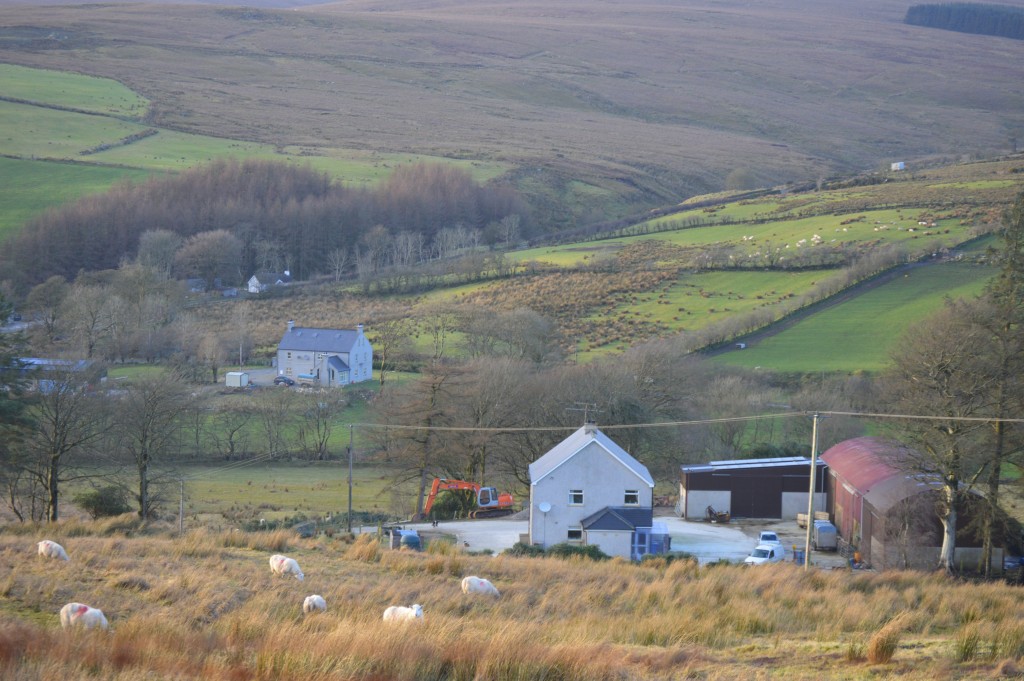
The new house (on right) in the picture is built on the site of the Sperrin Camp. The old building was formerly a hunting and fishing lodge belonging to the Lowry estate in Pomeroy.
This is the place on the Glenelly road near the county march between Tyrone and Derry where Tommy Kelly says they hid the guns which they had brought over from Donegal. The guns were hidden for a while here before they were delivered to there intended destinations in South Derry. This is also the place where Johnston s motor car was hidden after it arrived in Ballinascreen. A turf stack was built around the car and it was kept hidden there until the heat went out of the search for it. It later became the staff car for the B Company in the area. After the war was over it is said that the Kellys (Neillys) used it as a taxi for a number of years.

